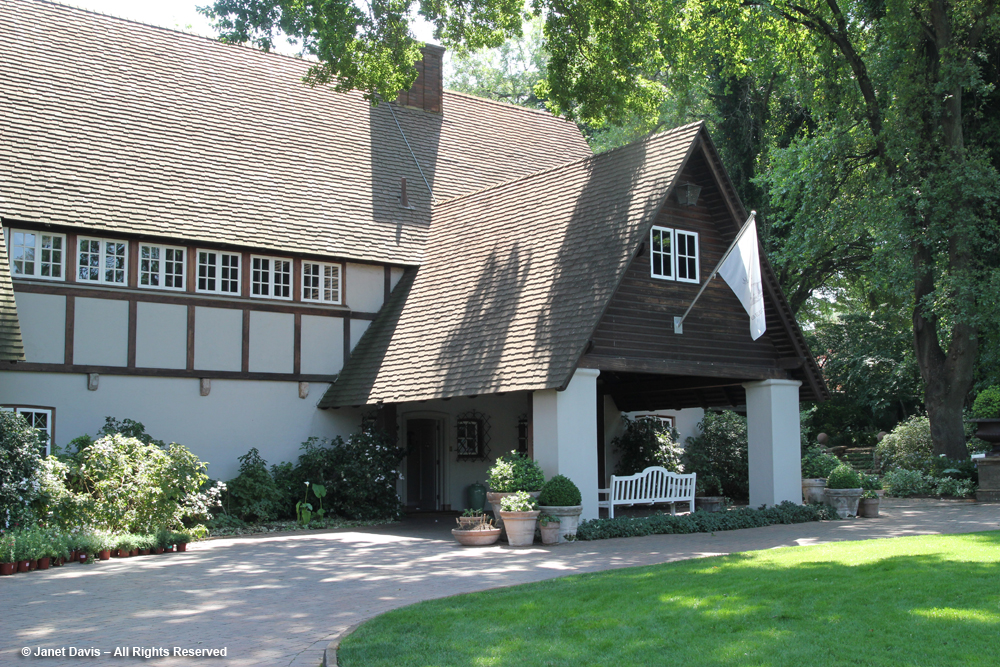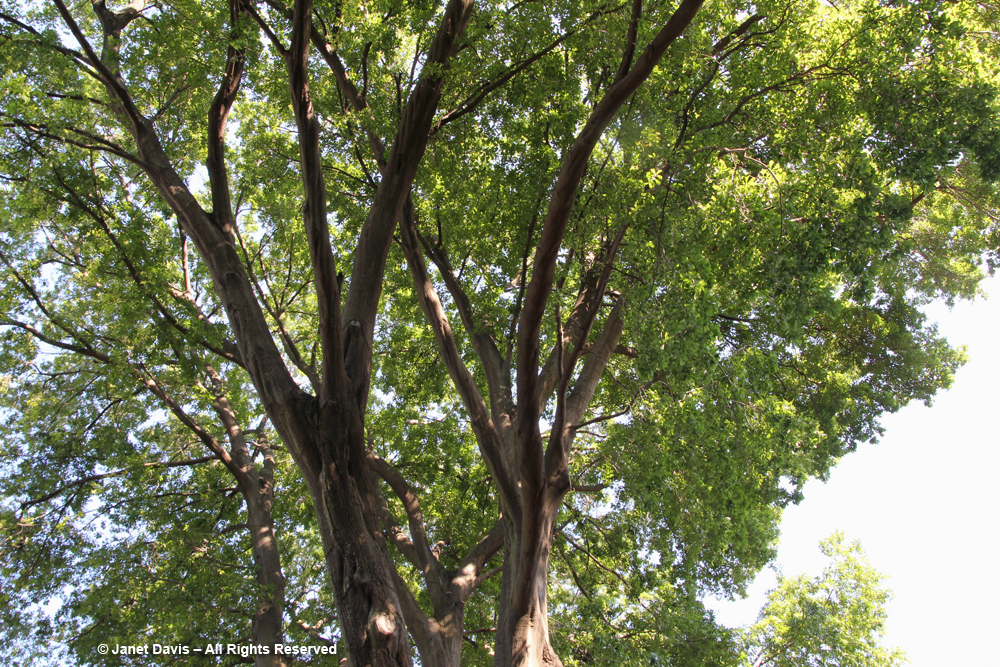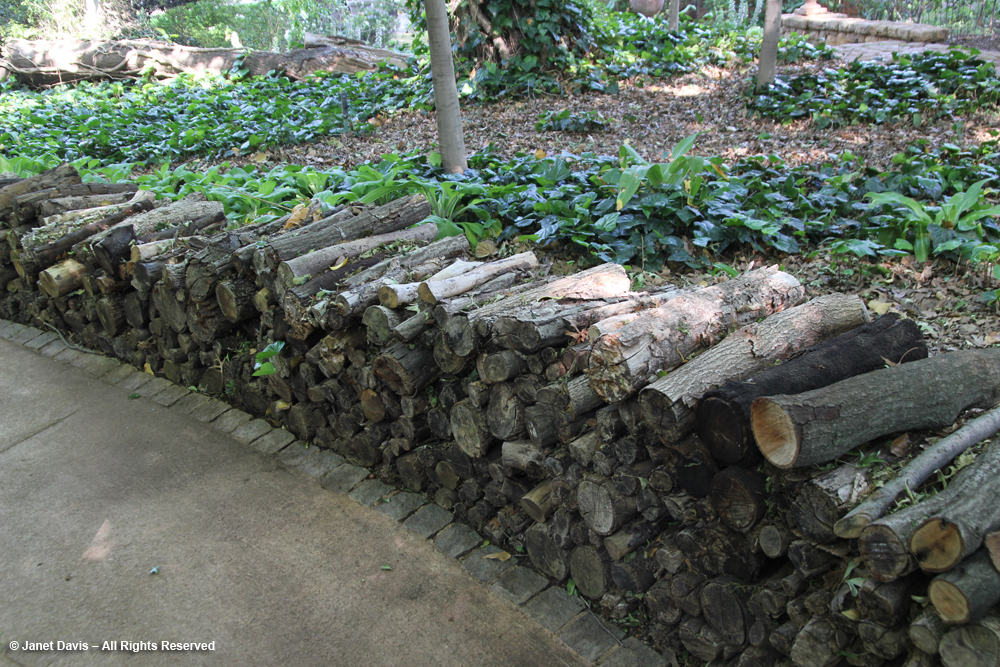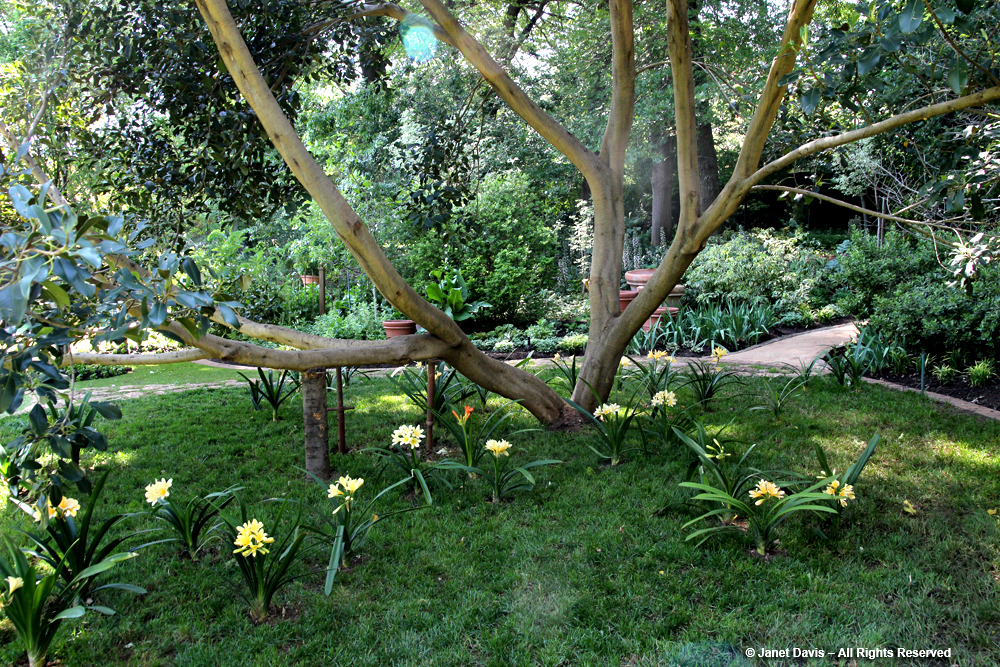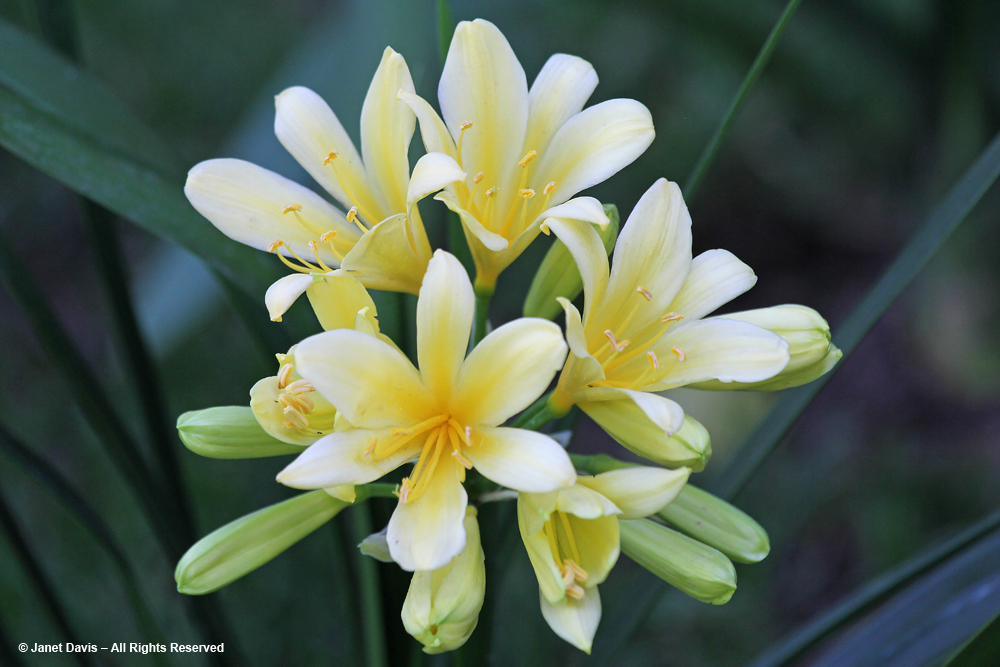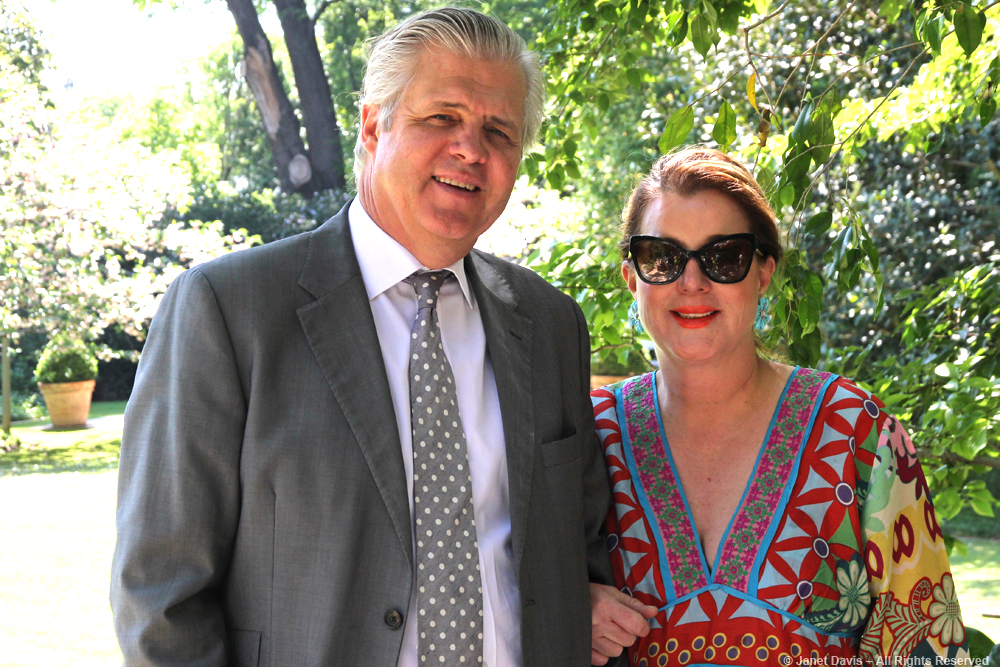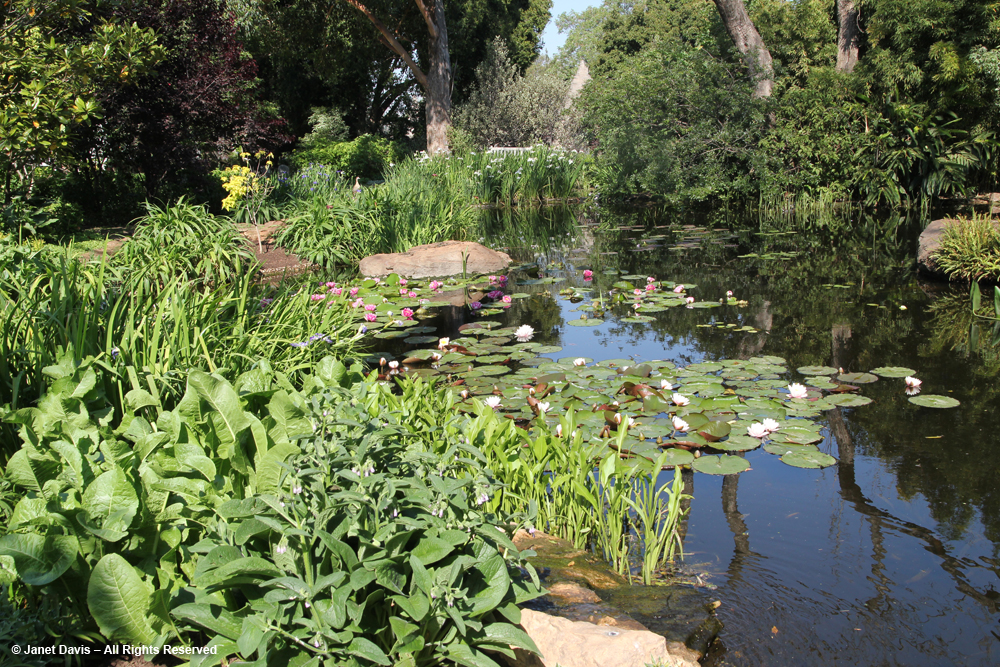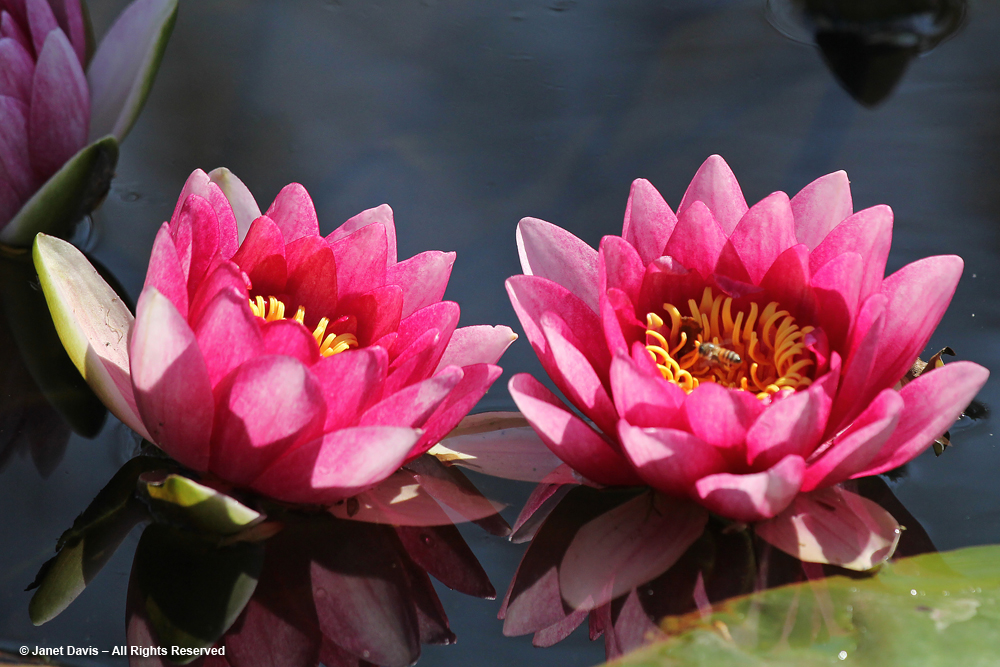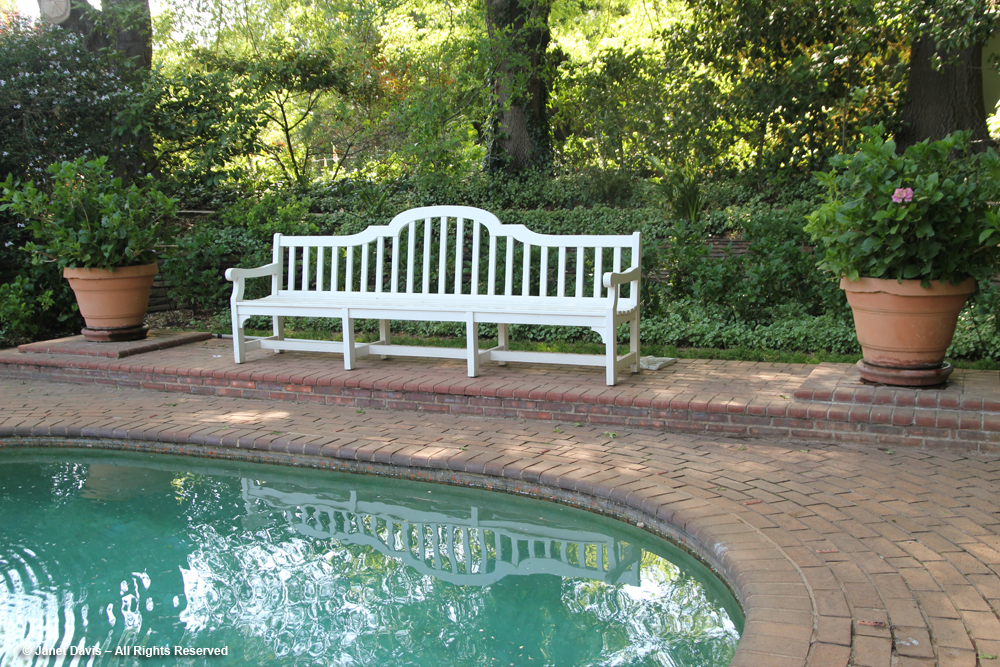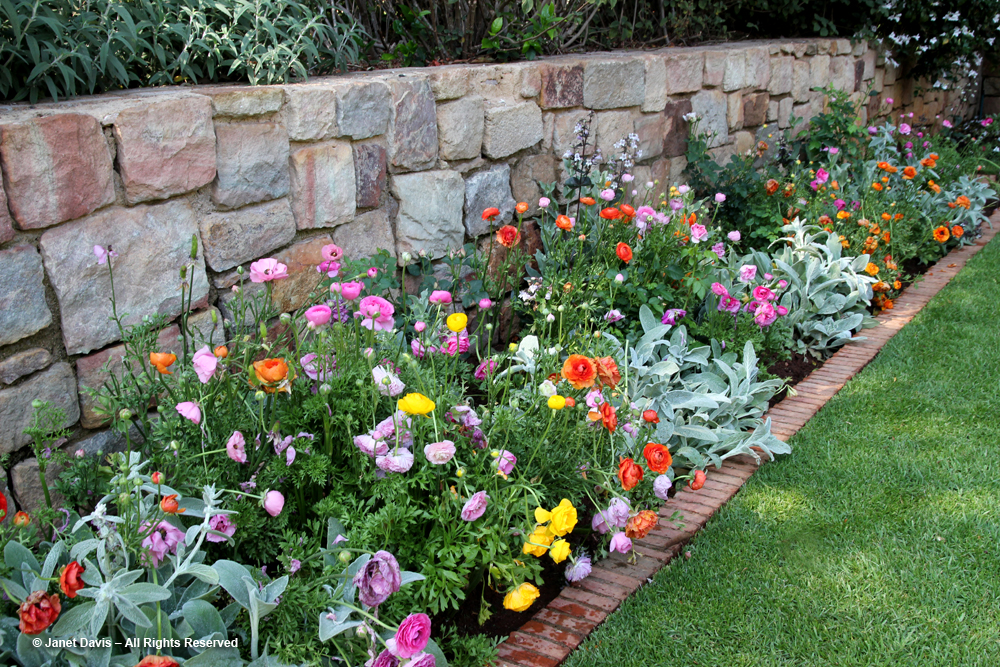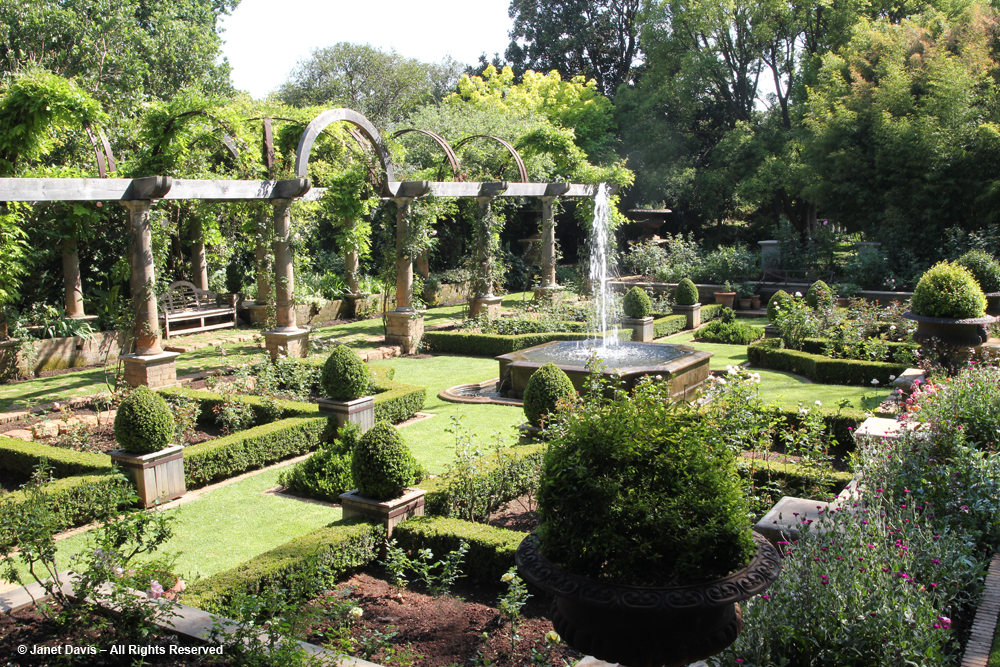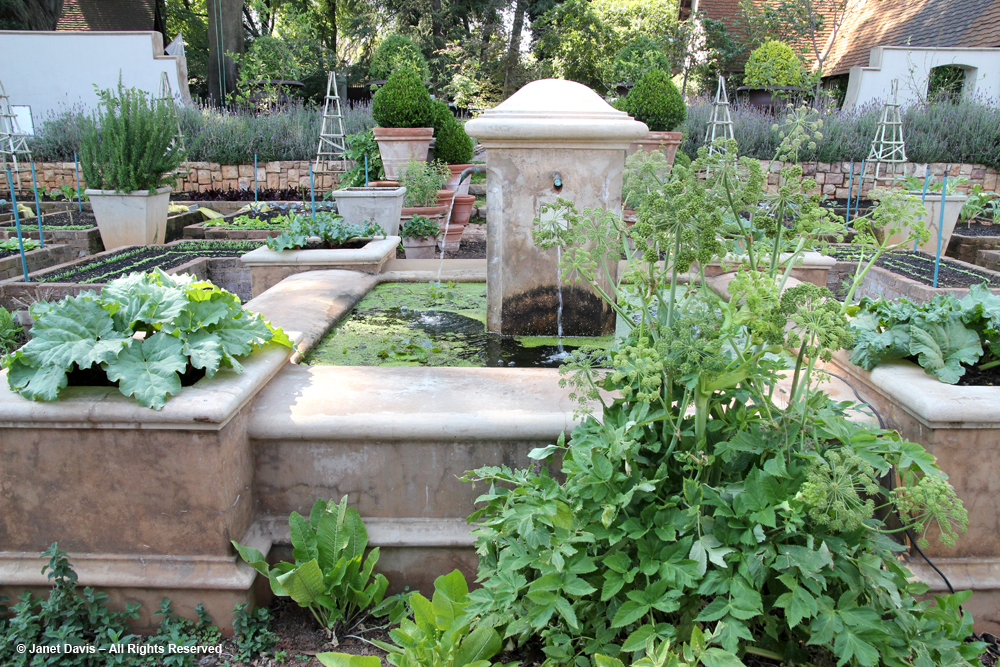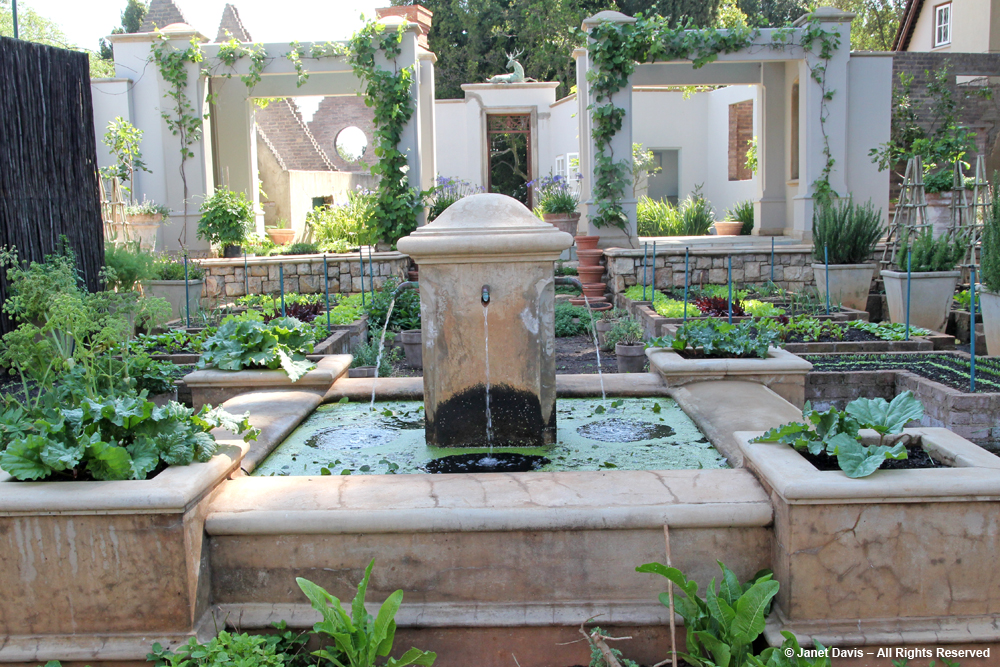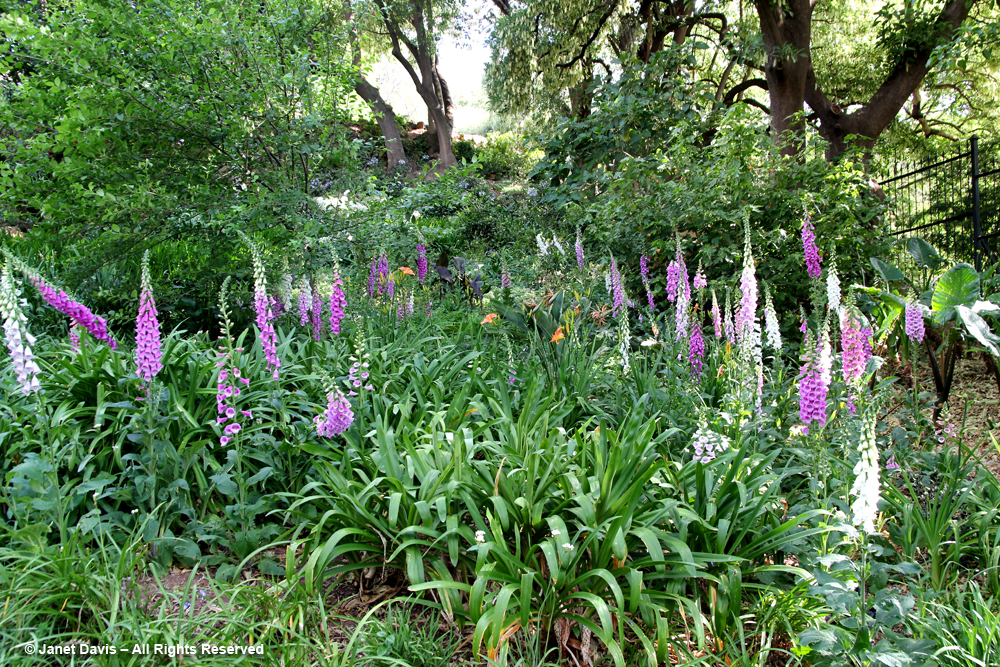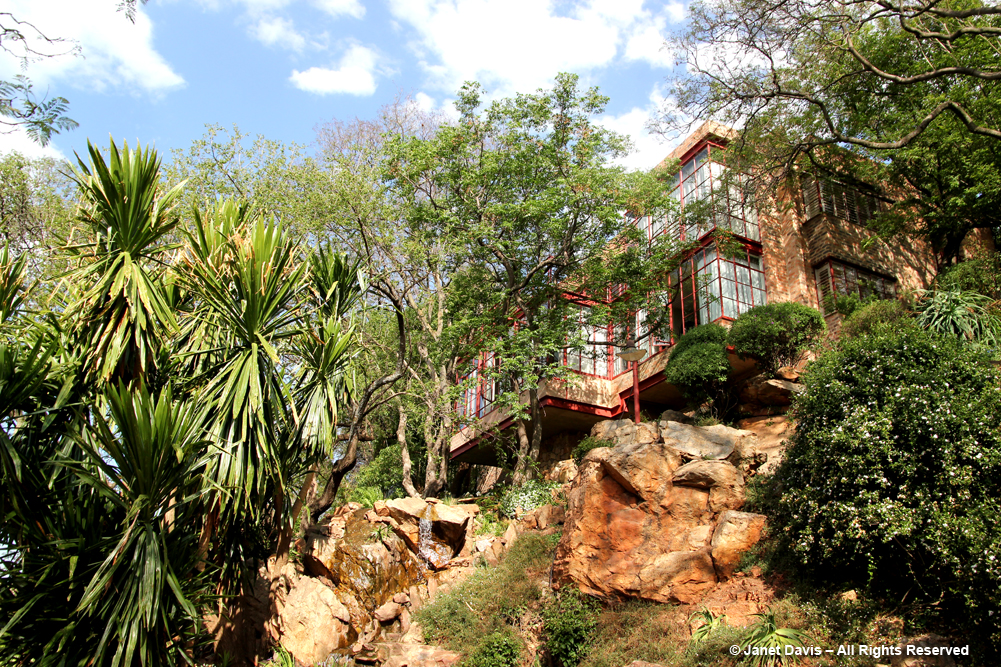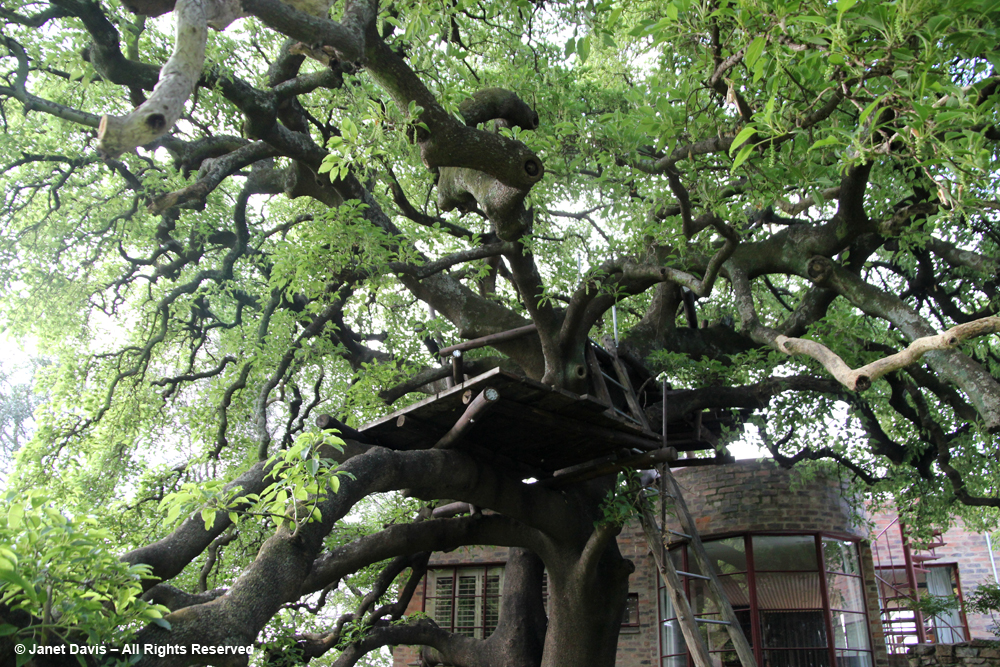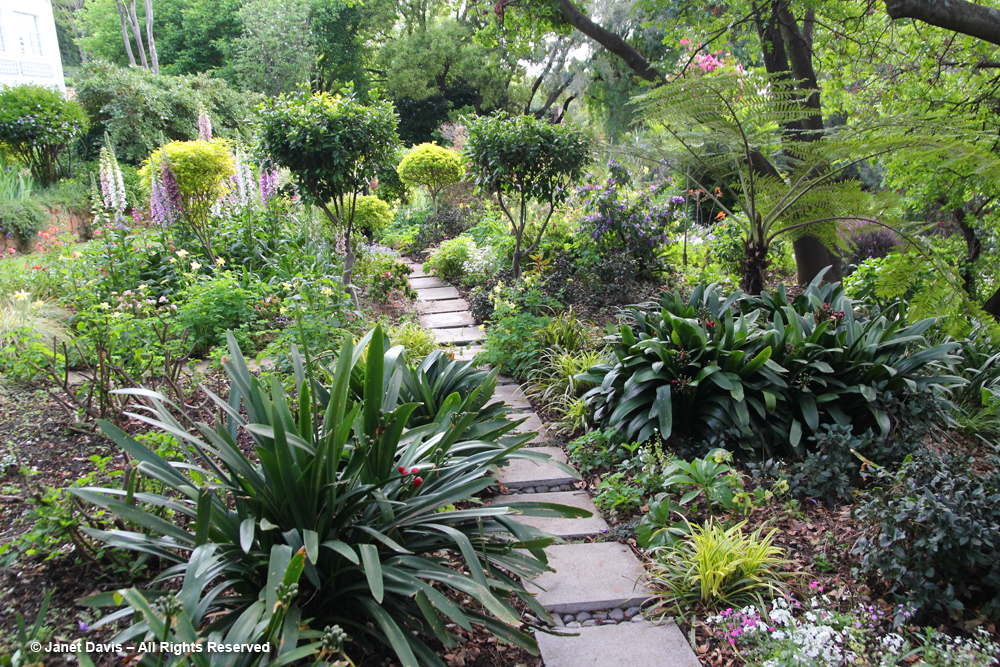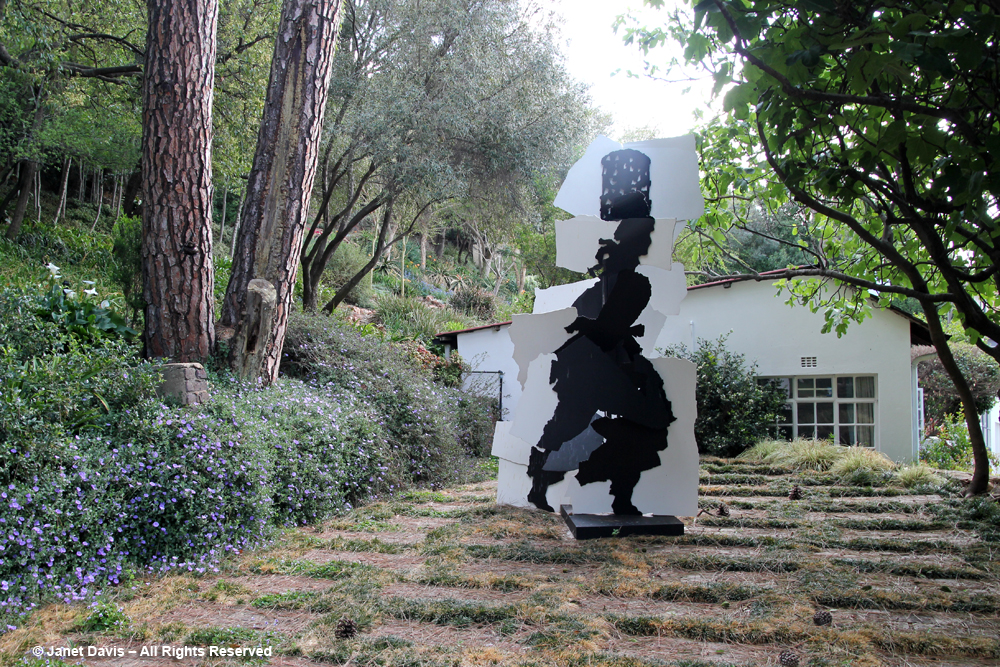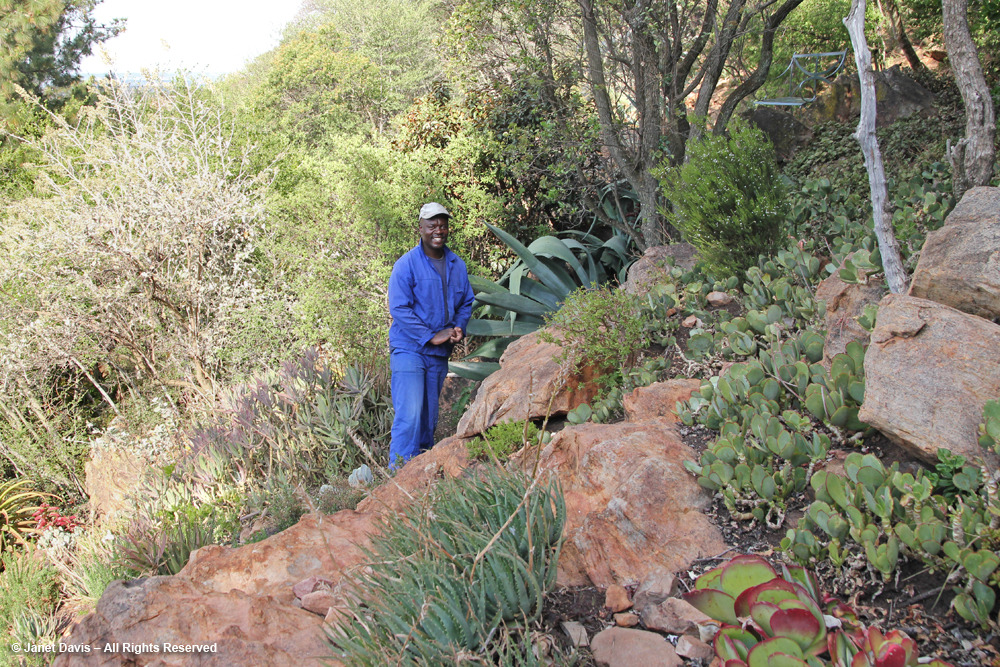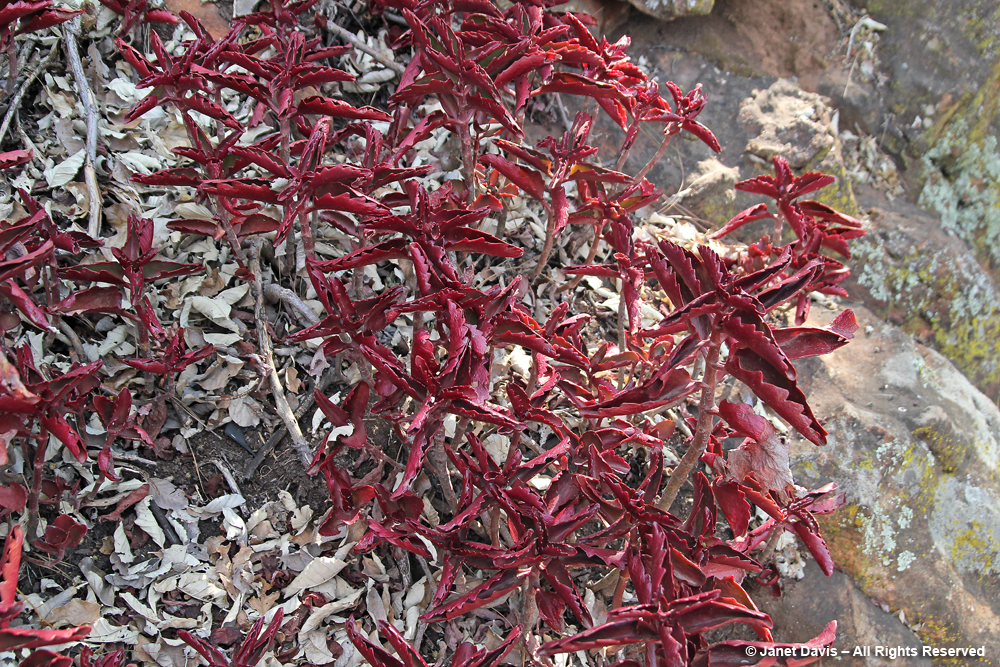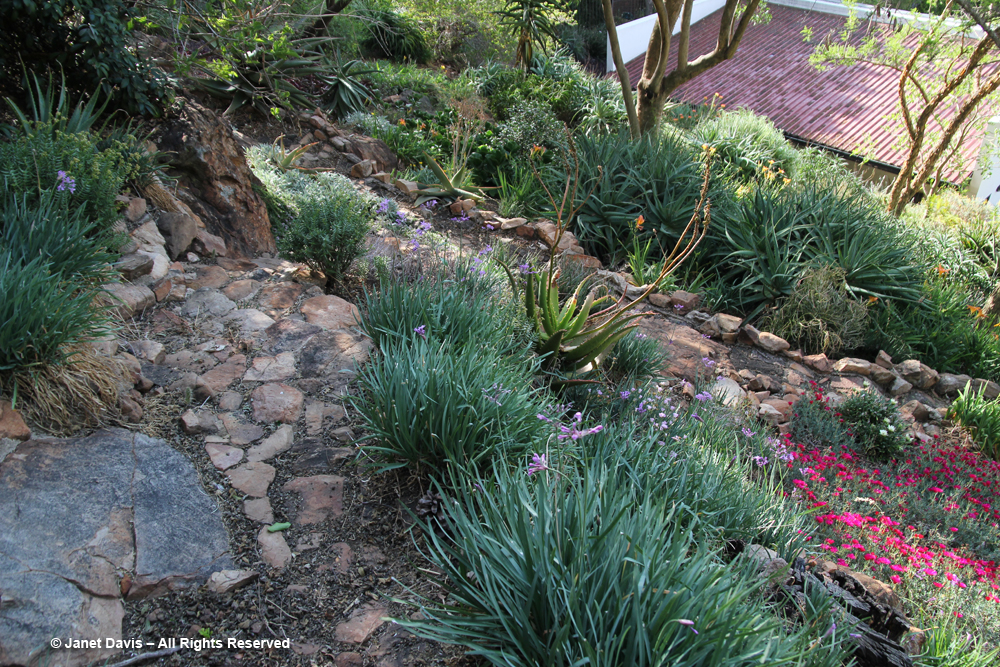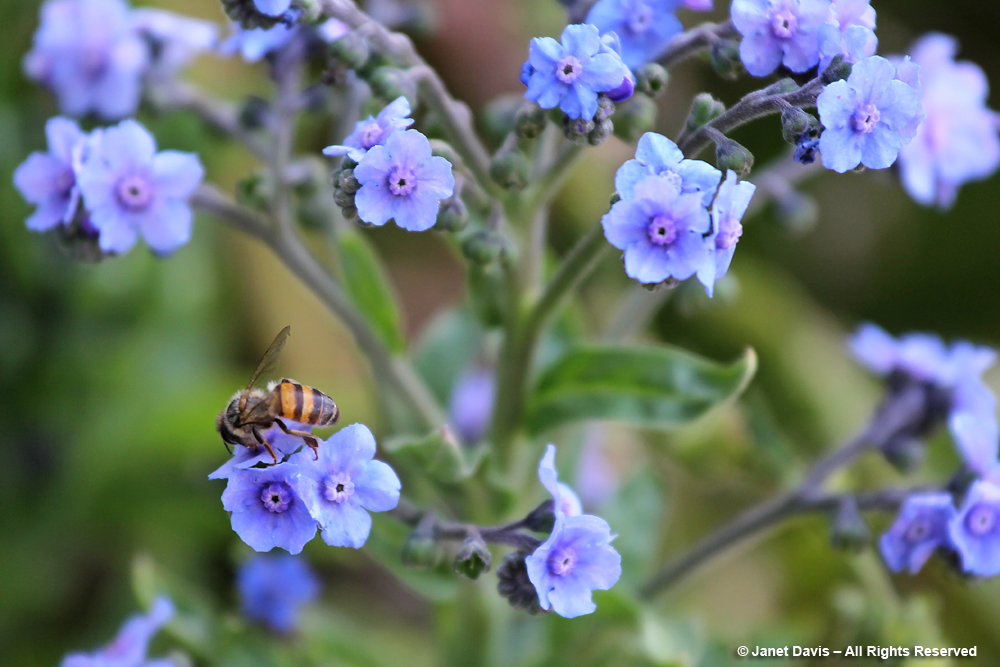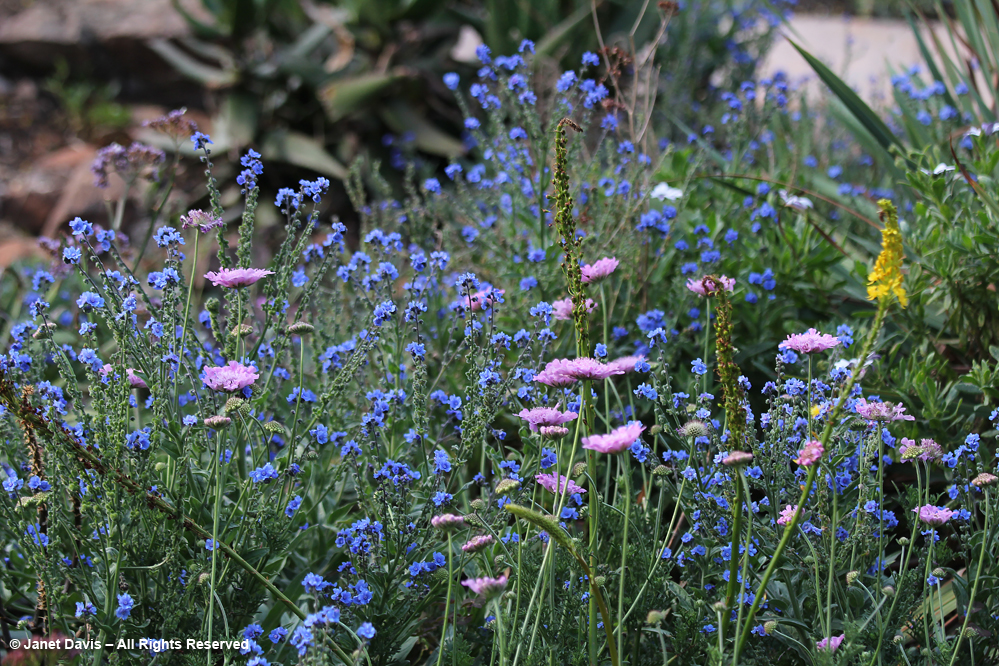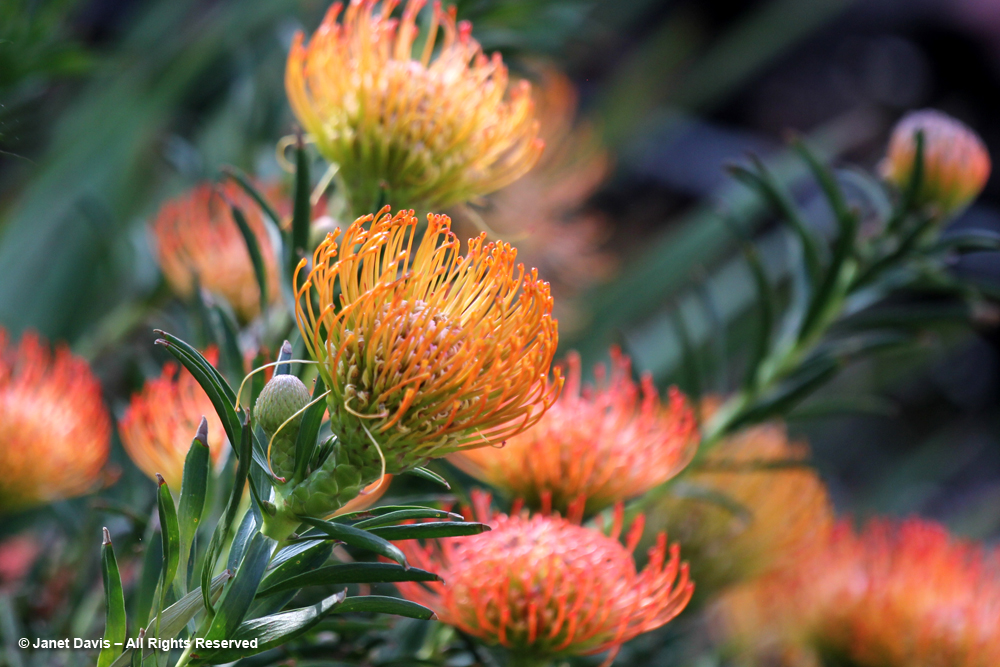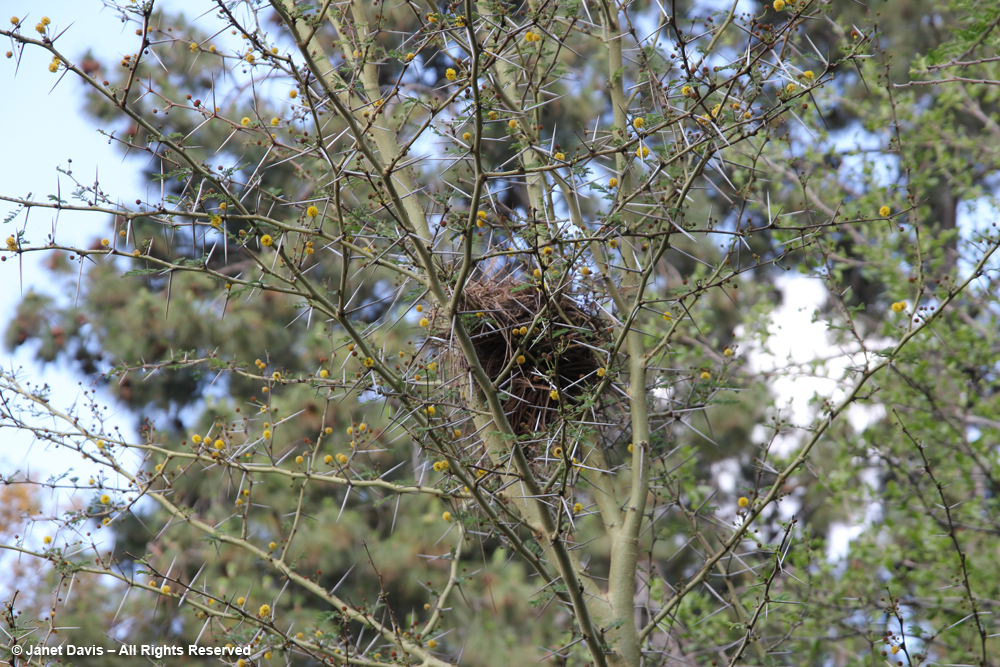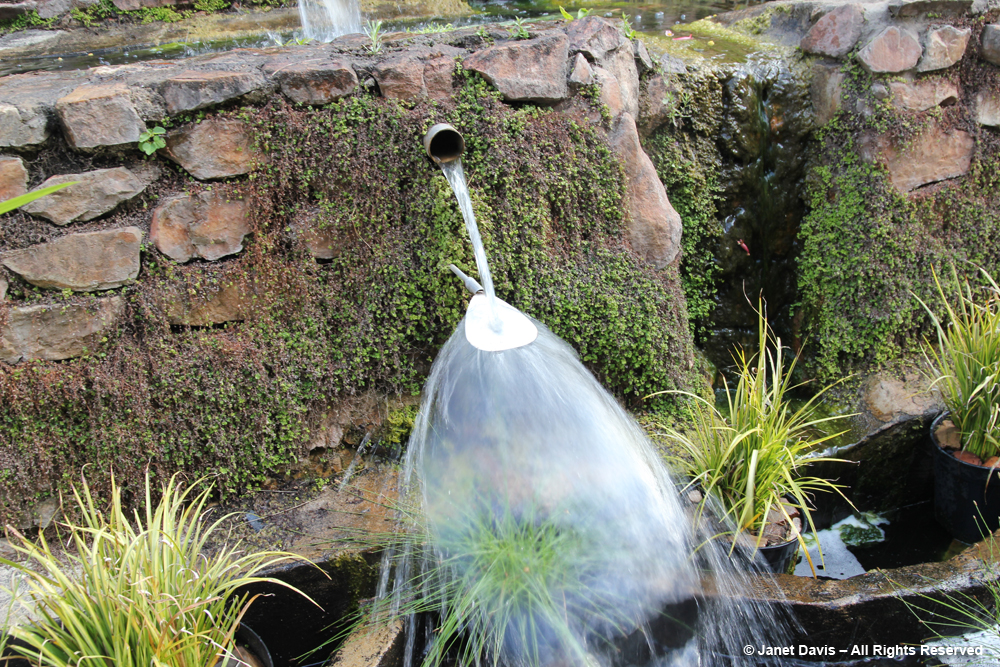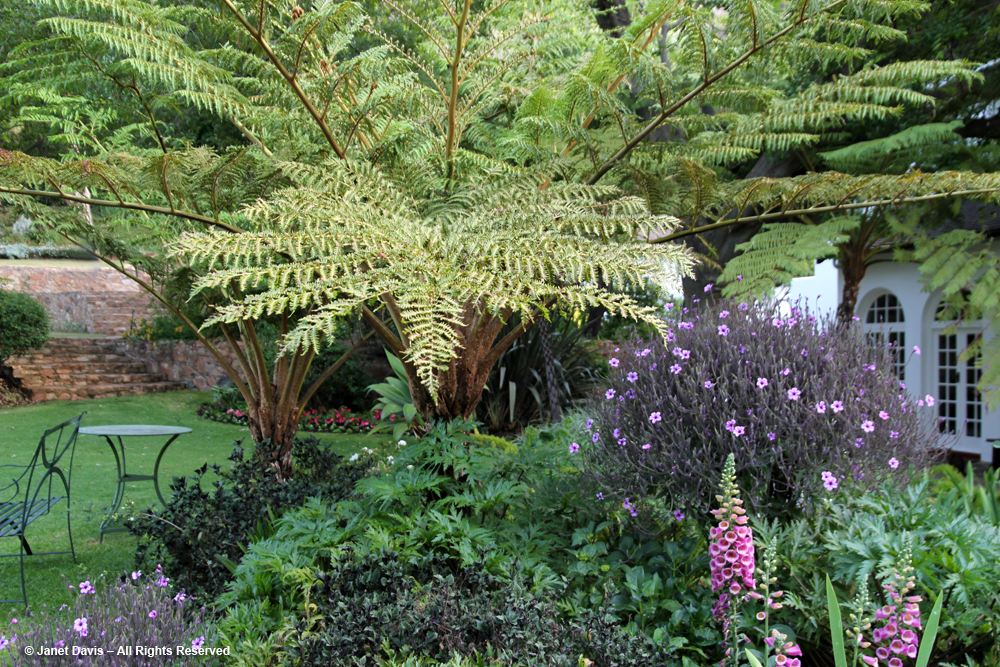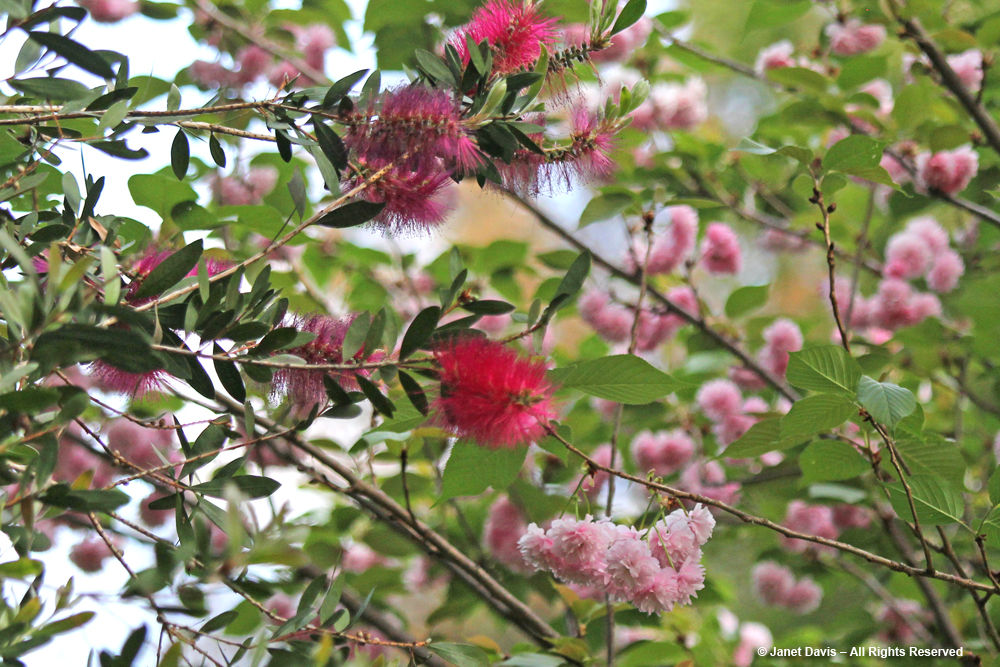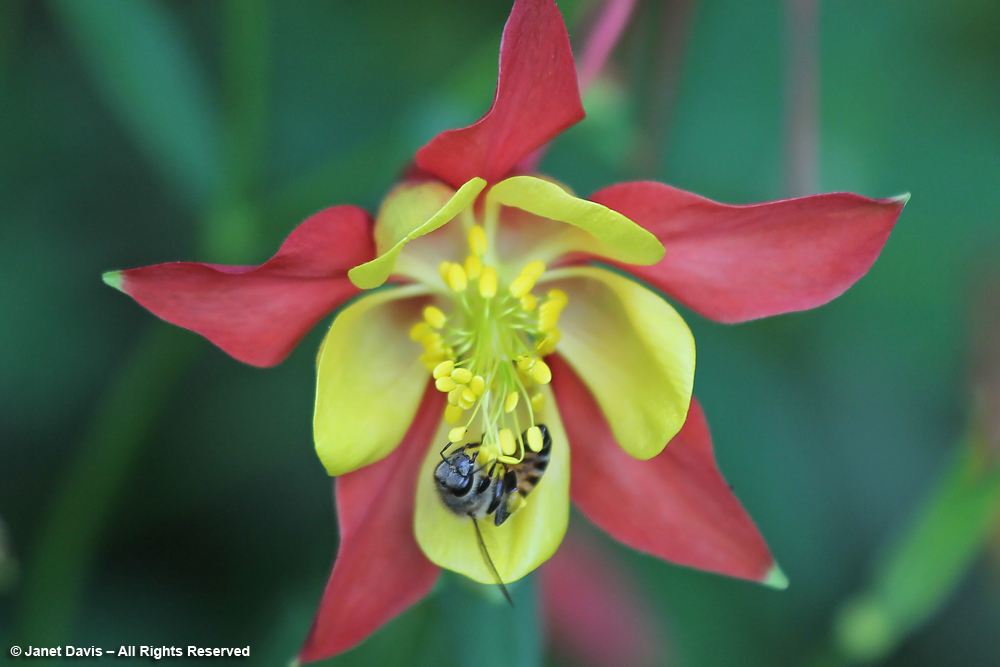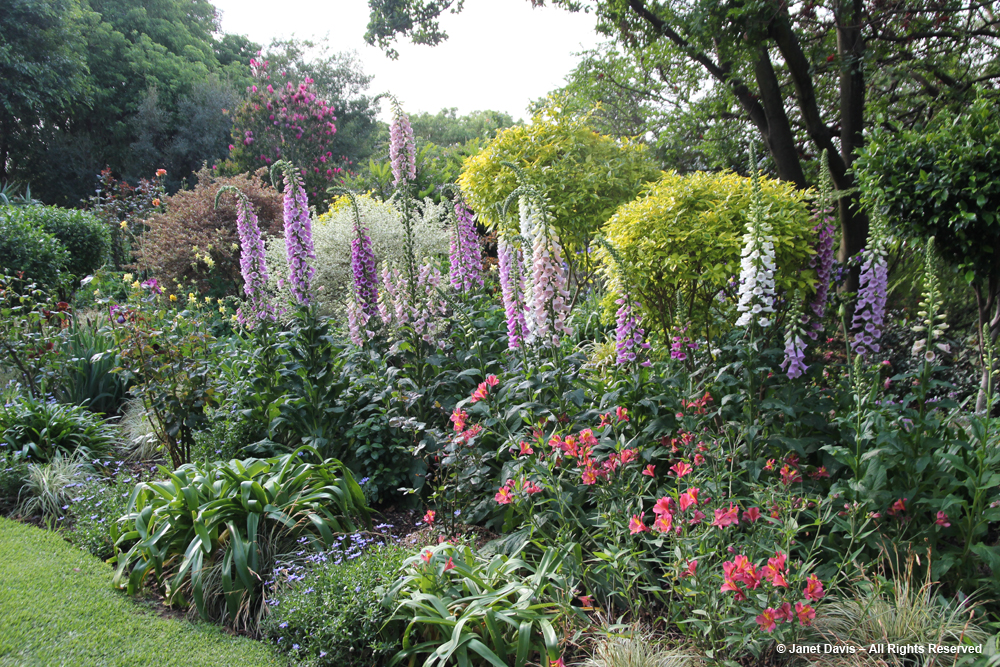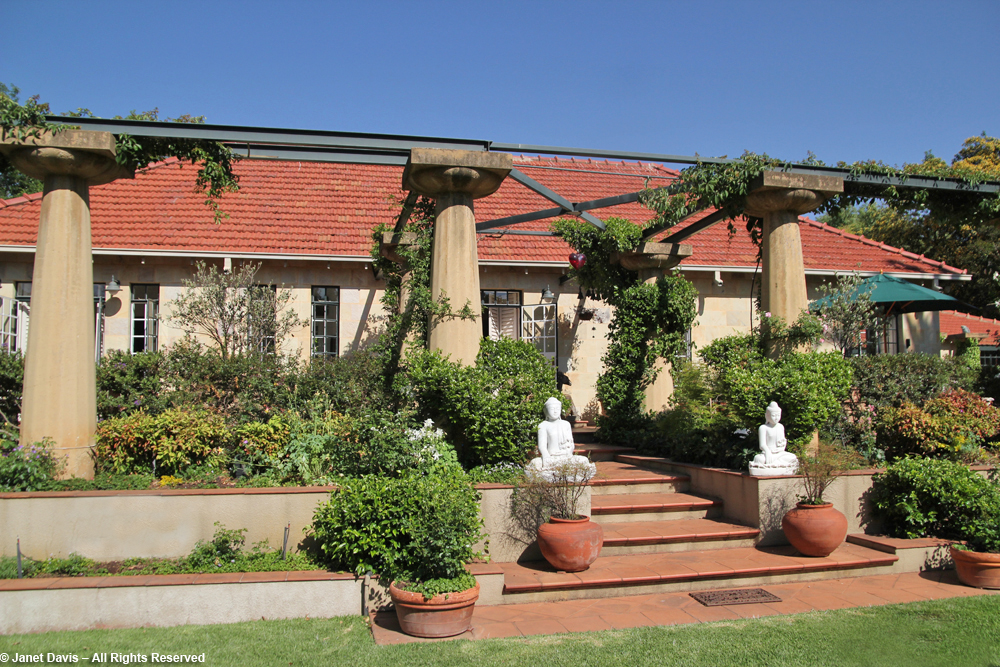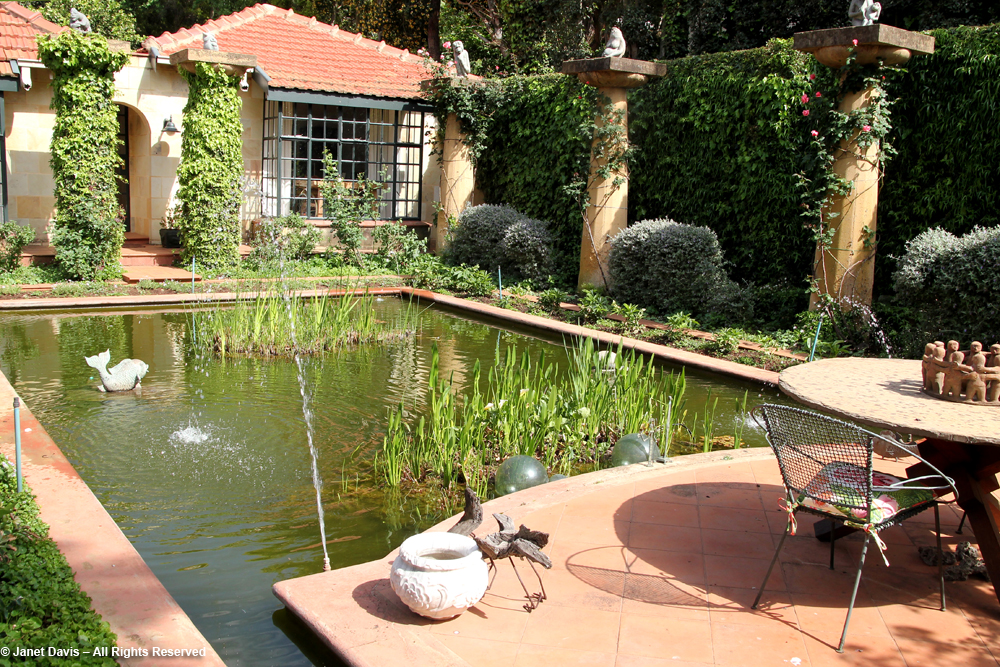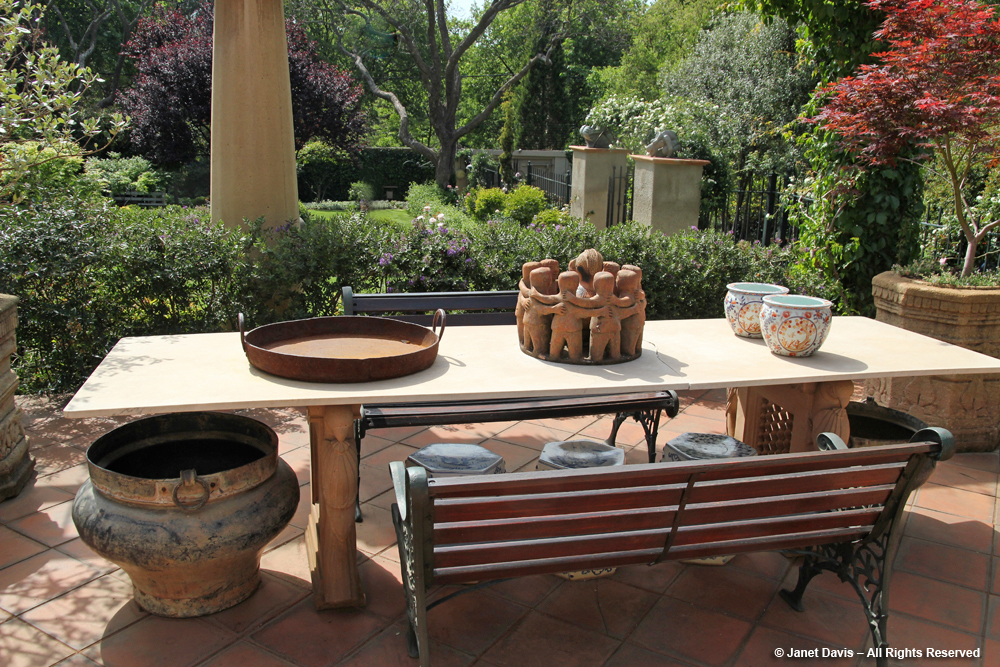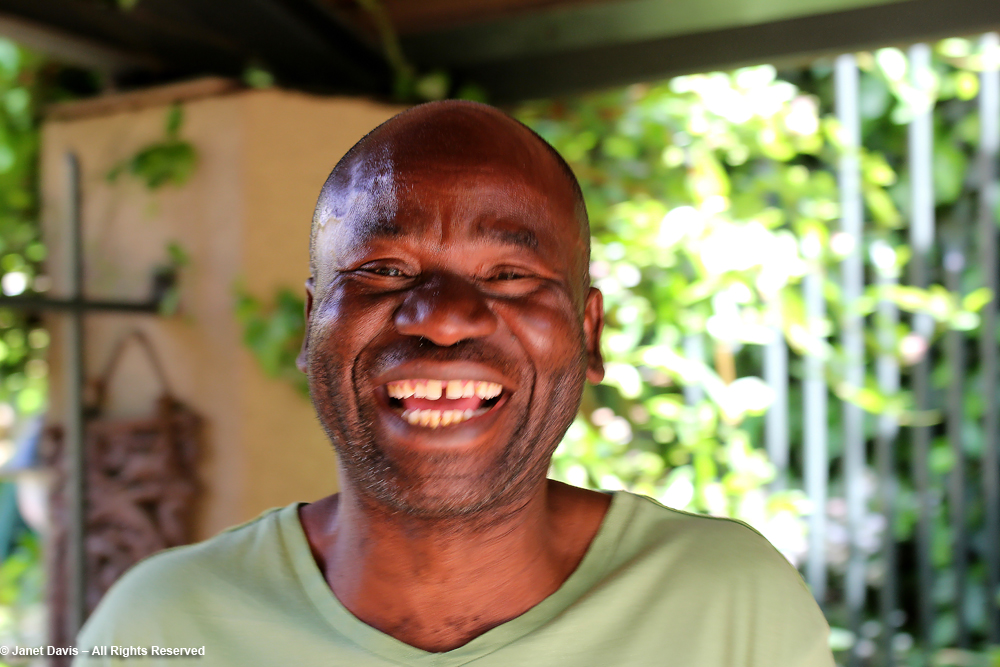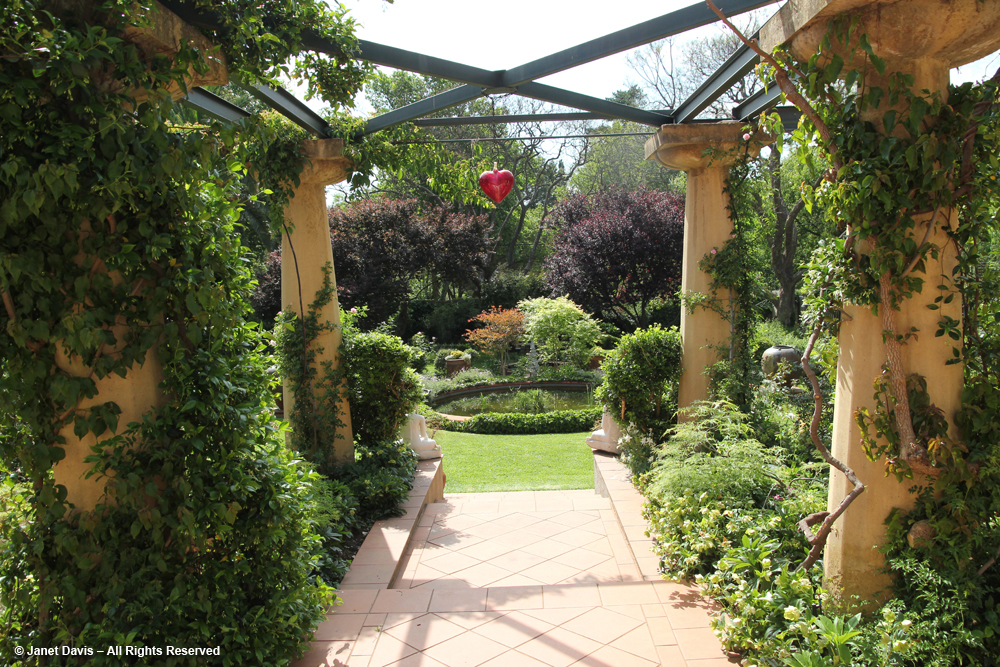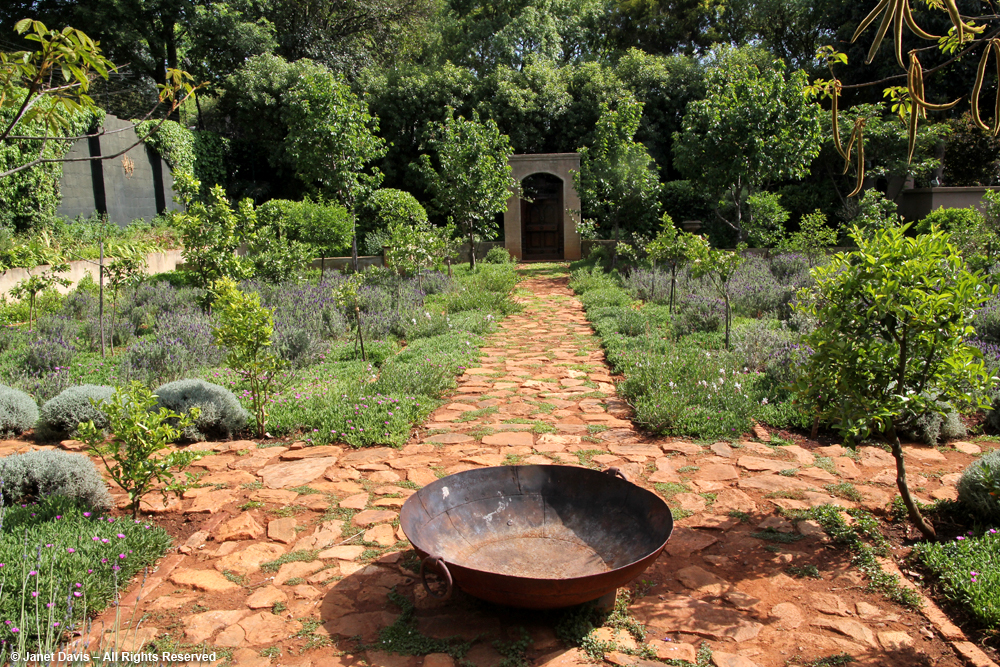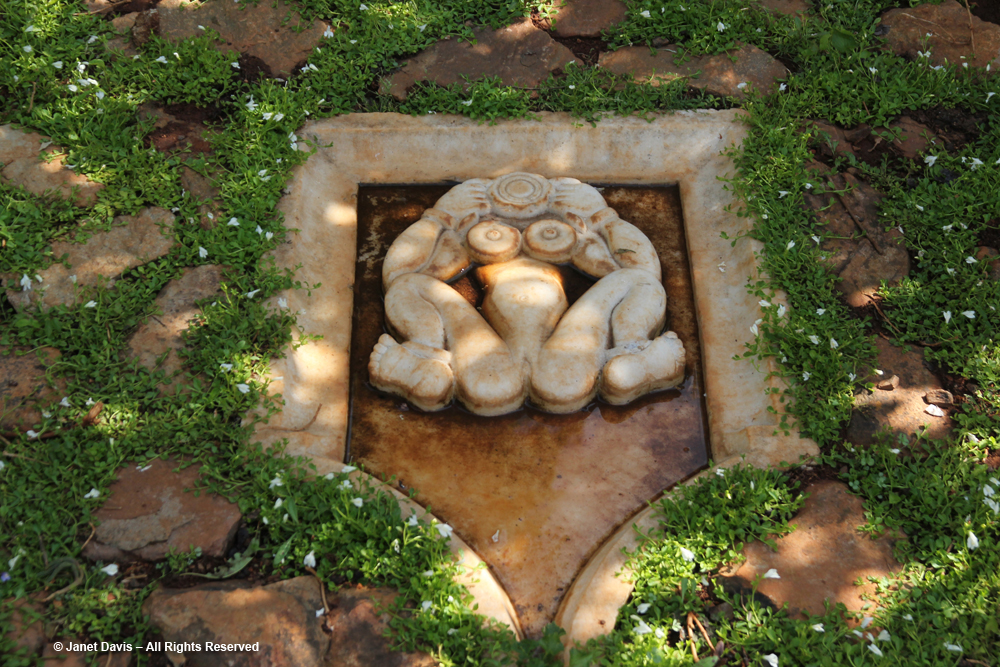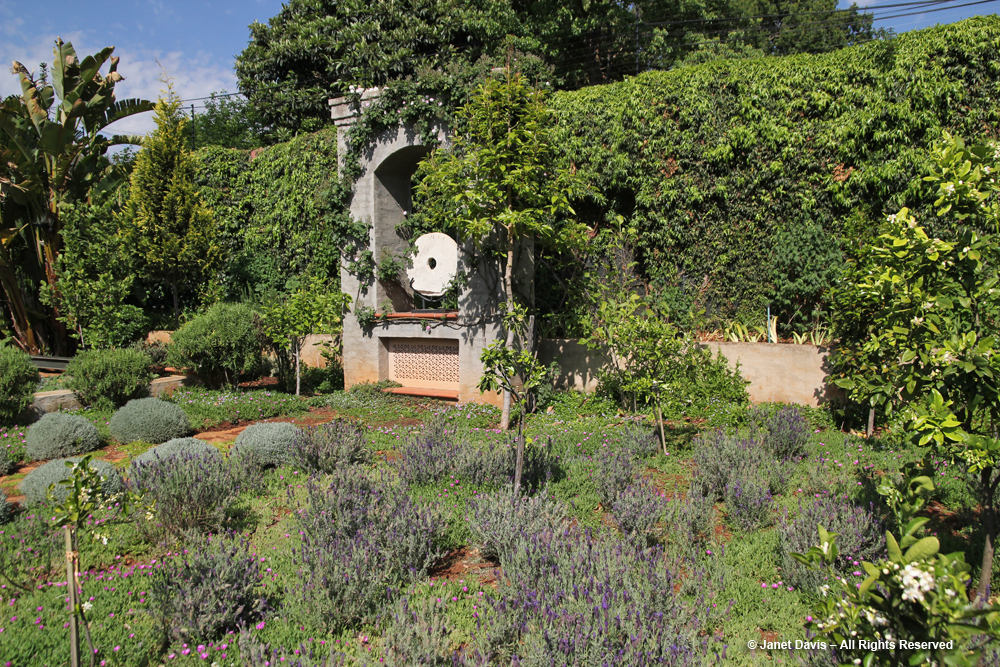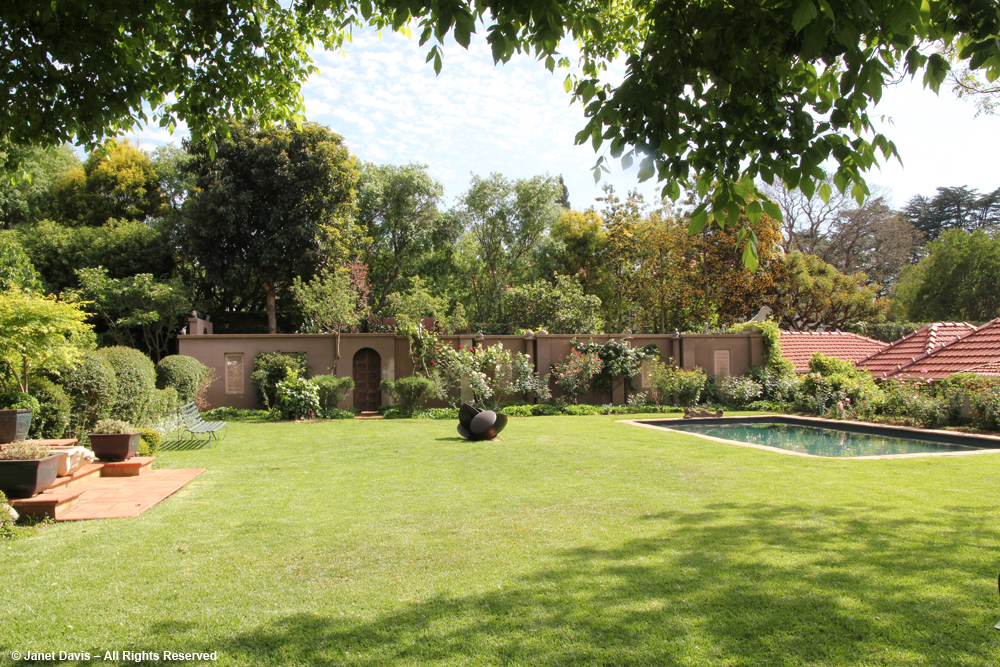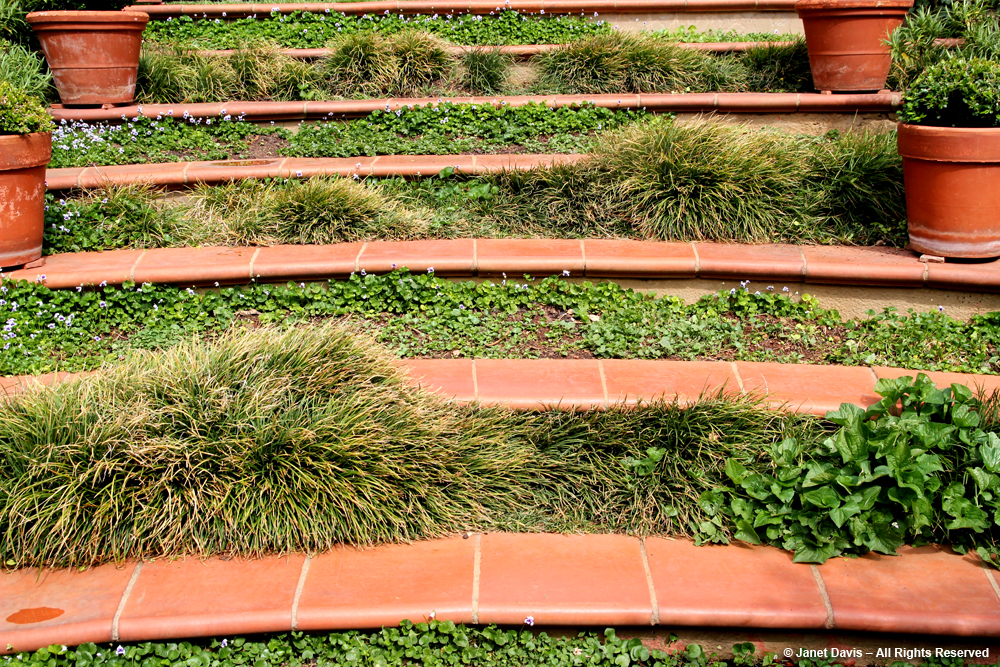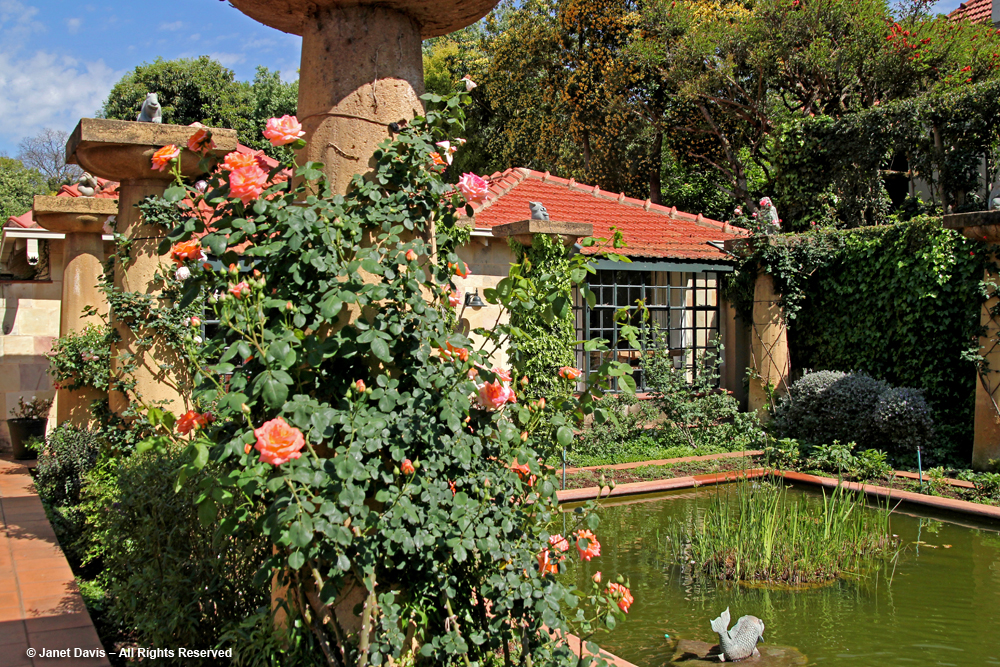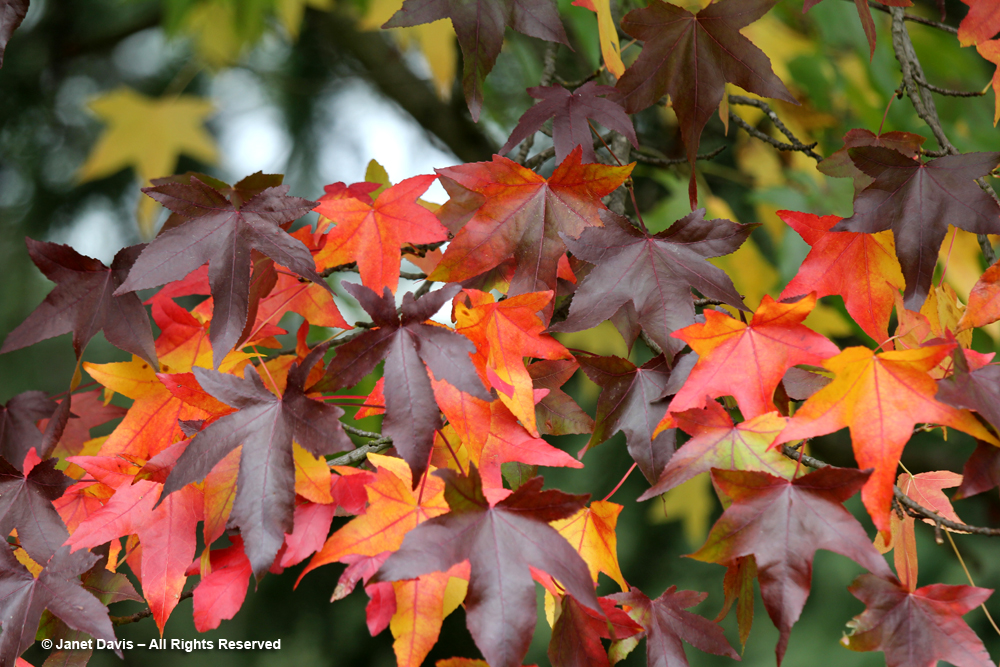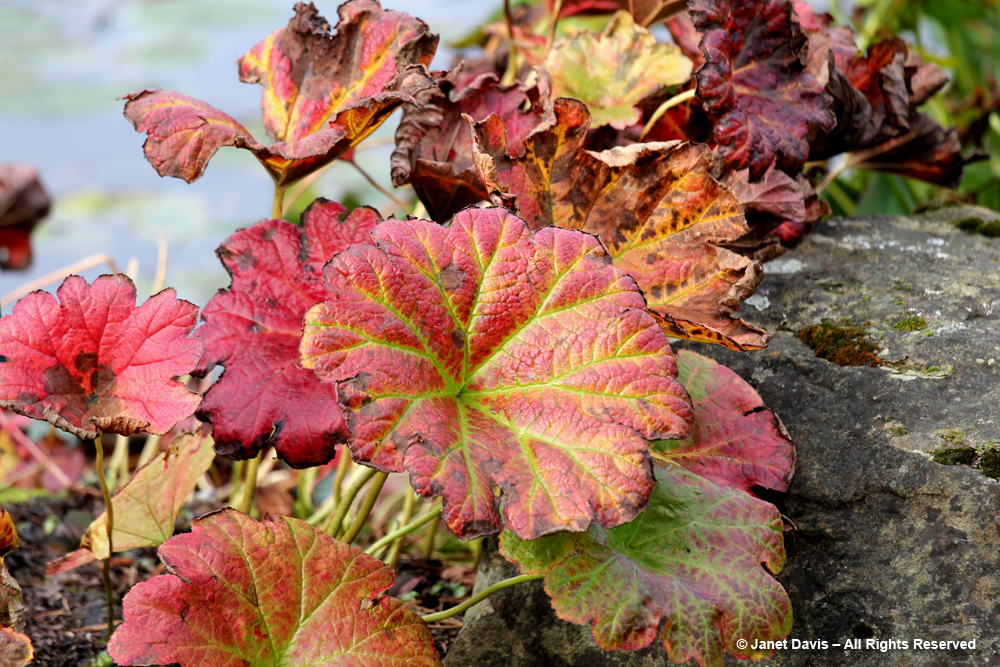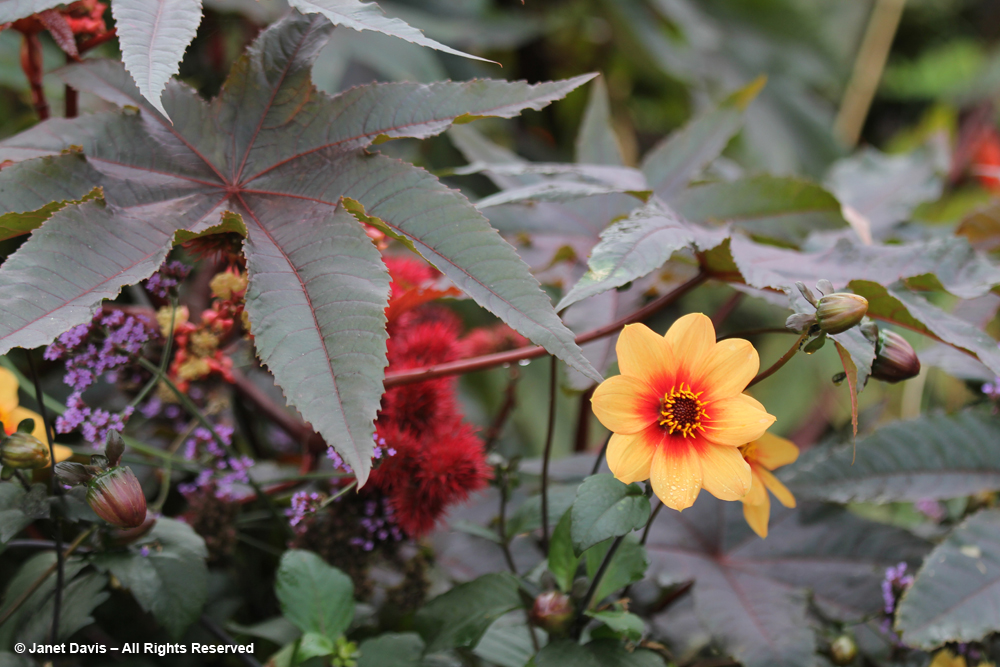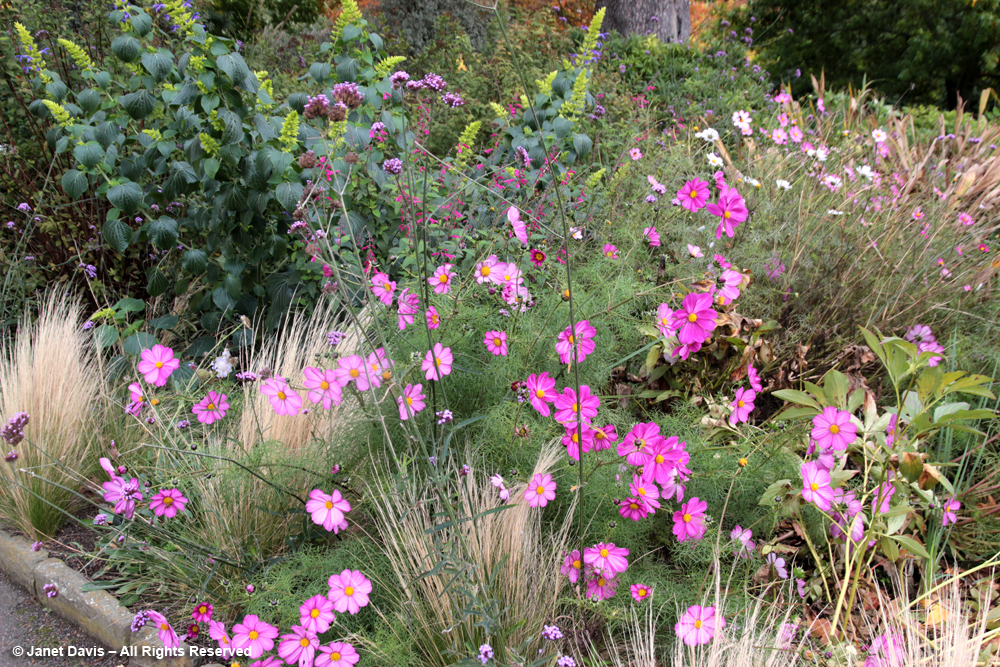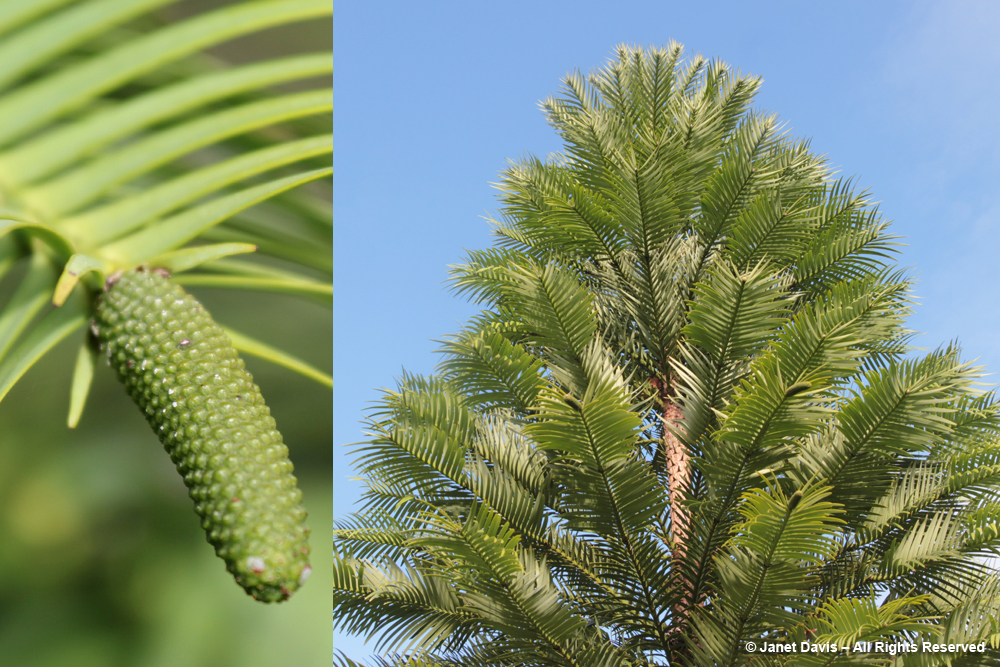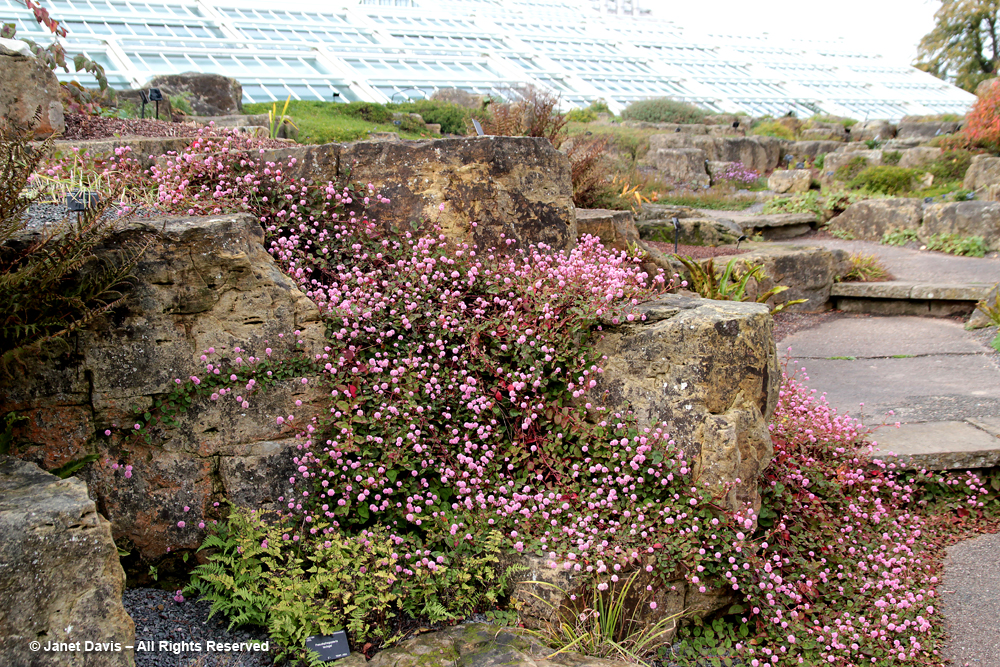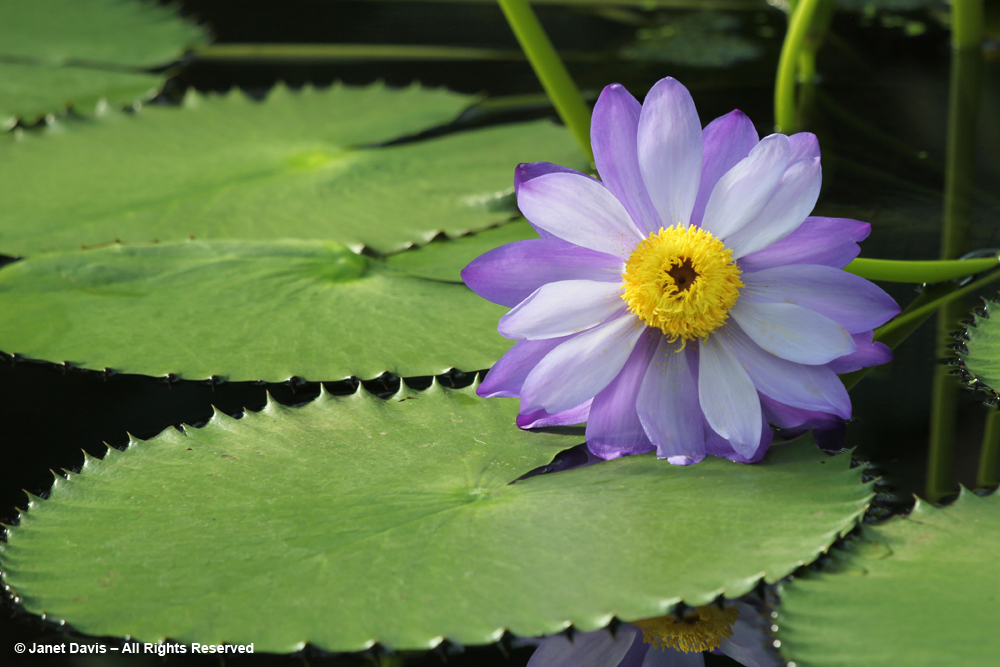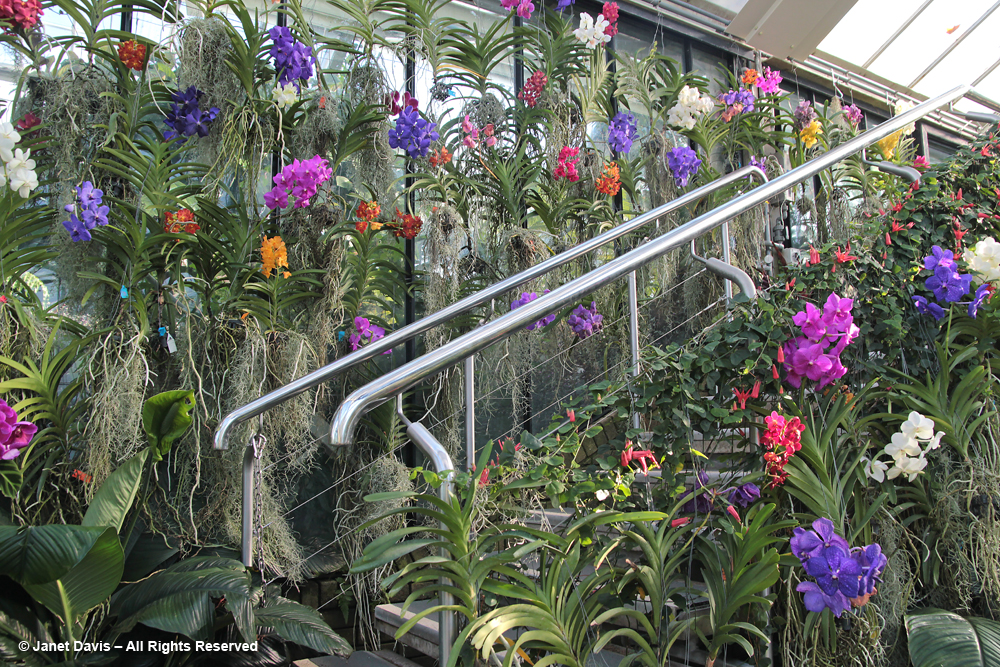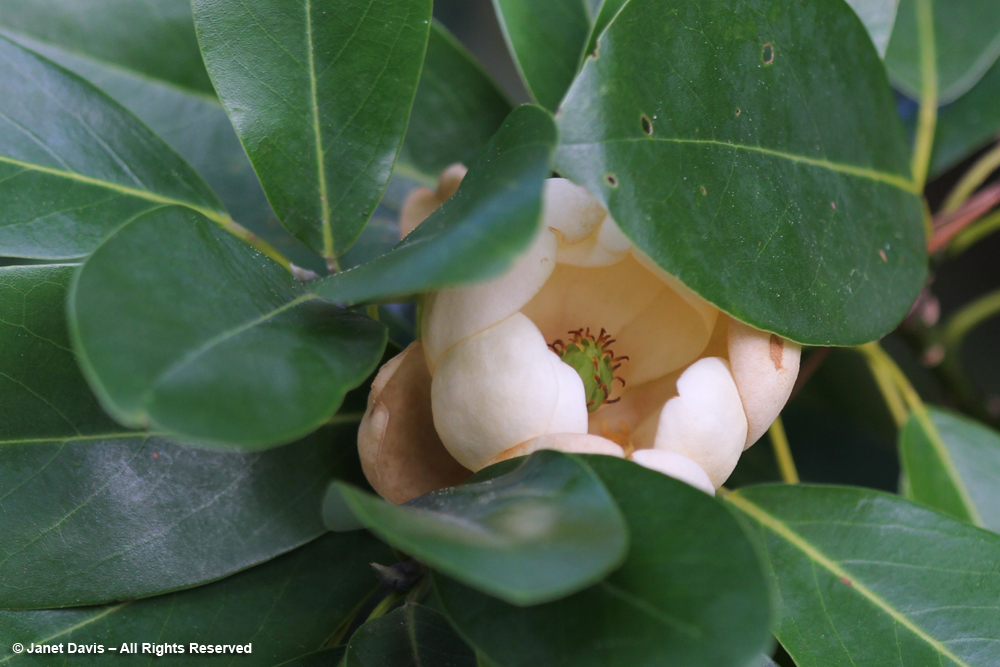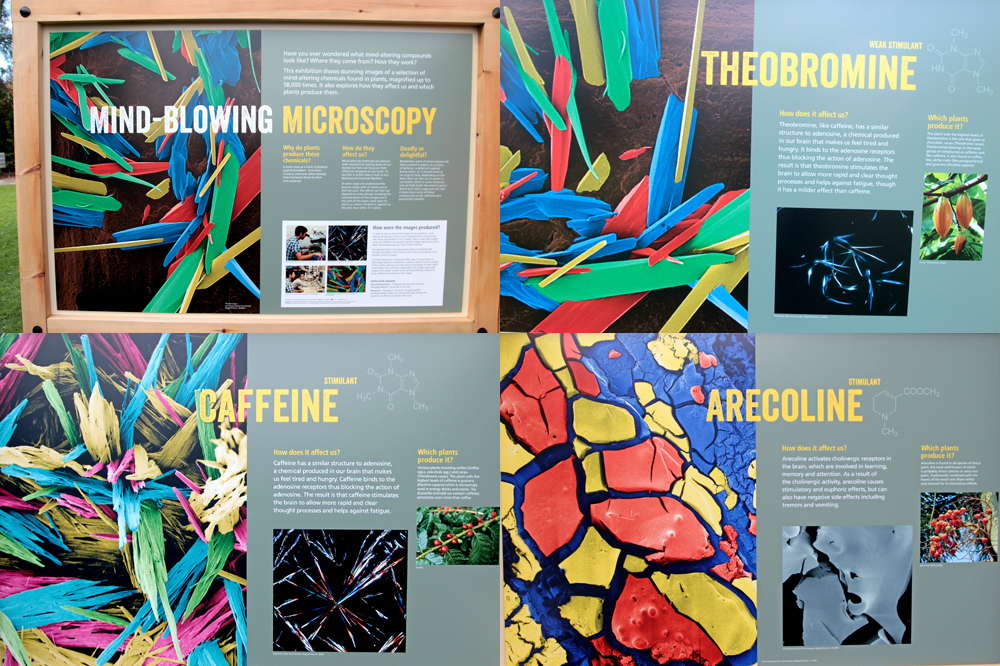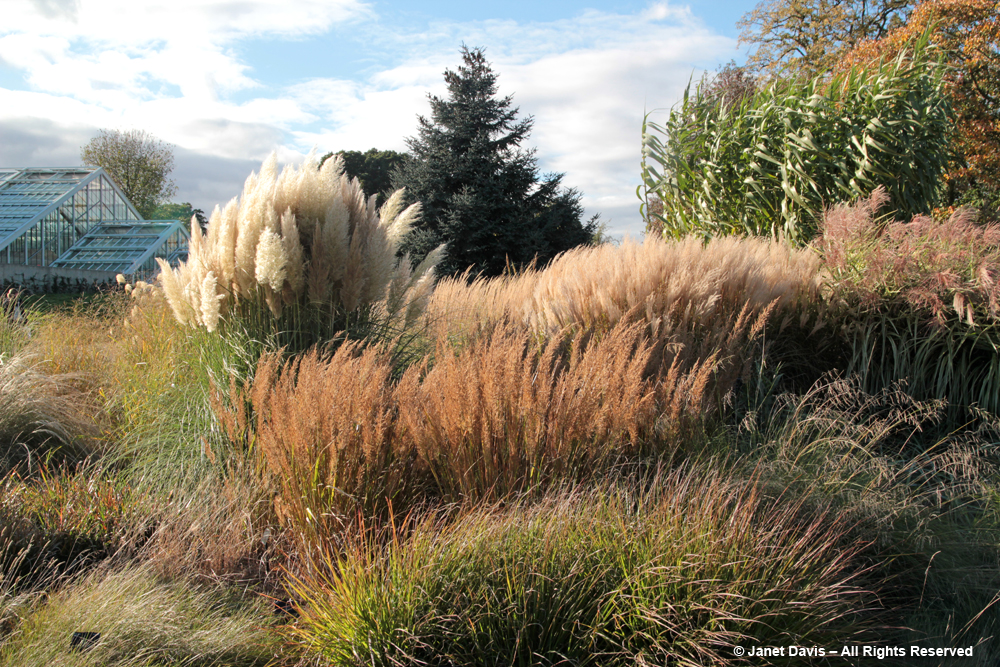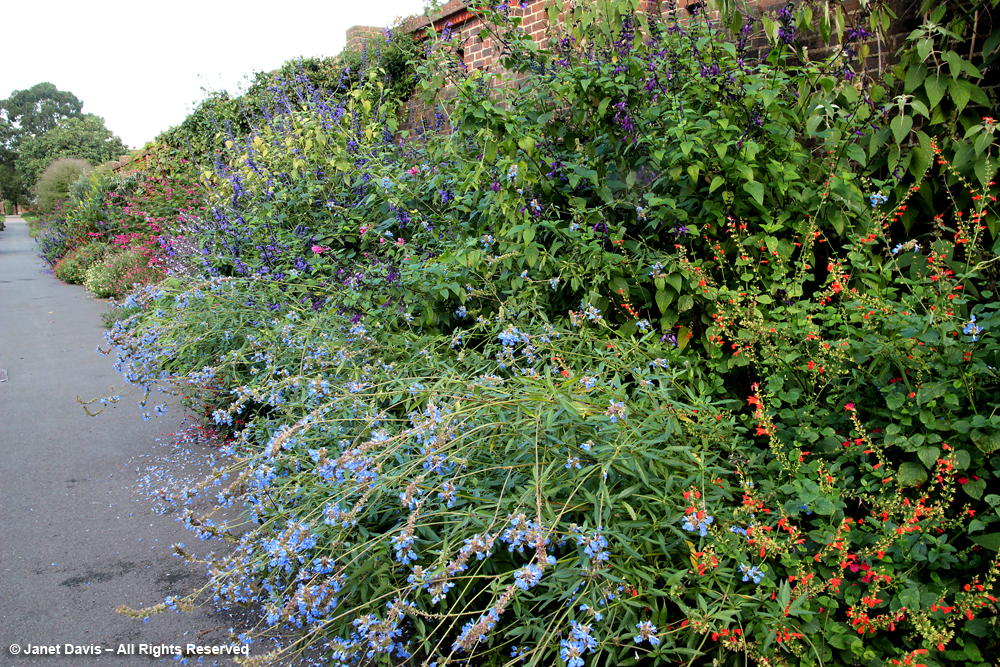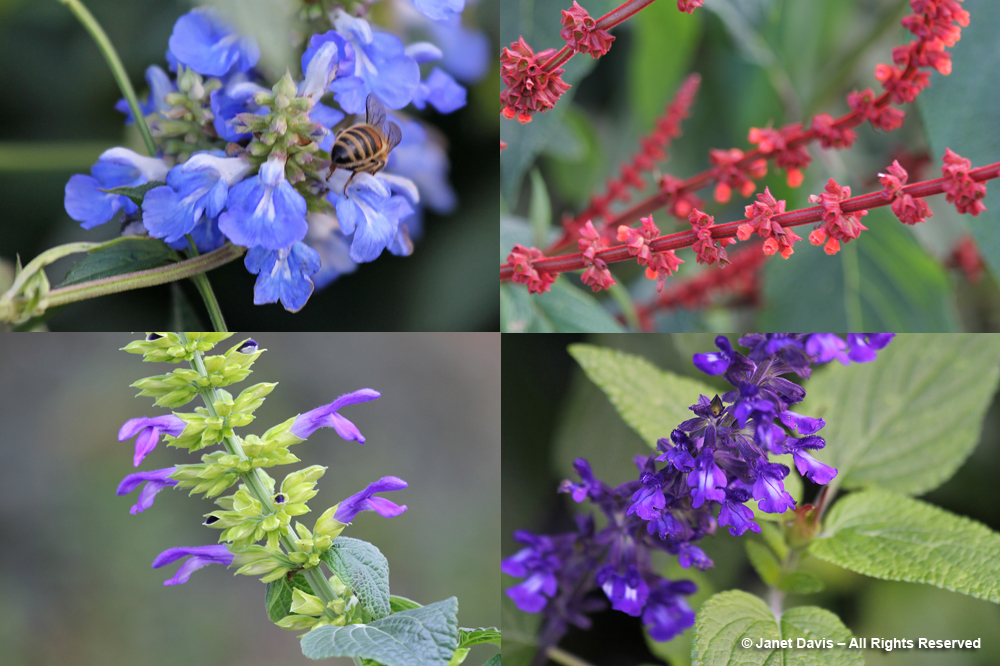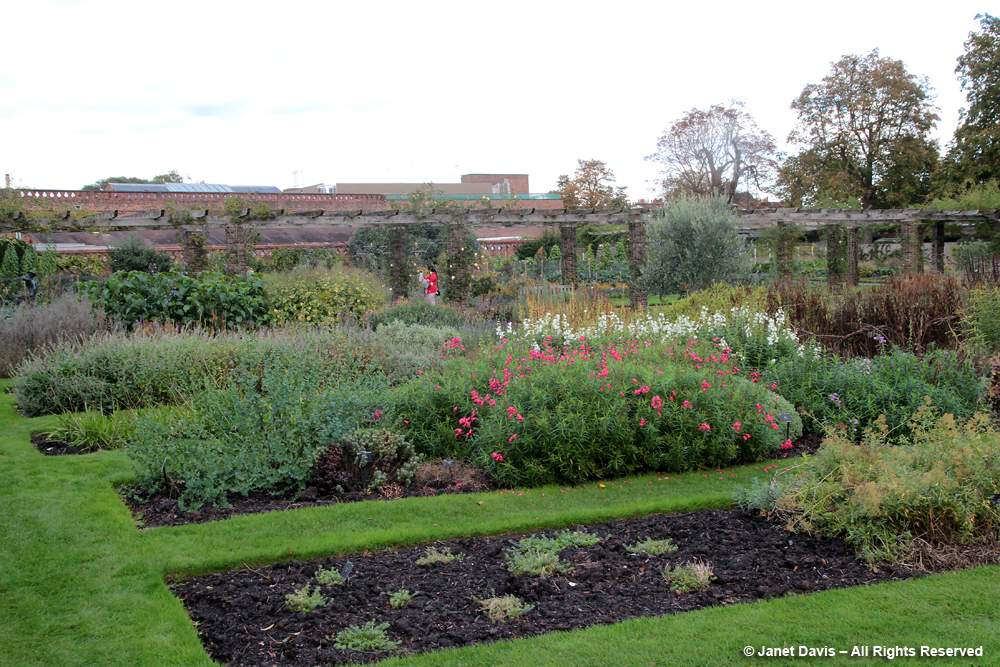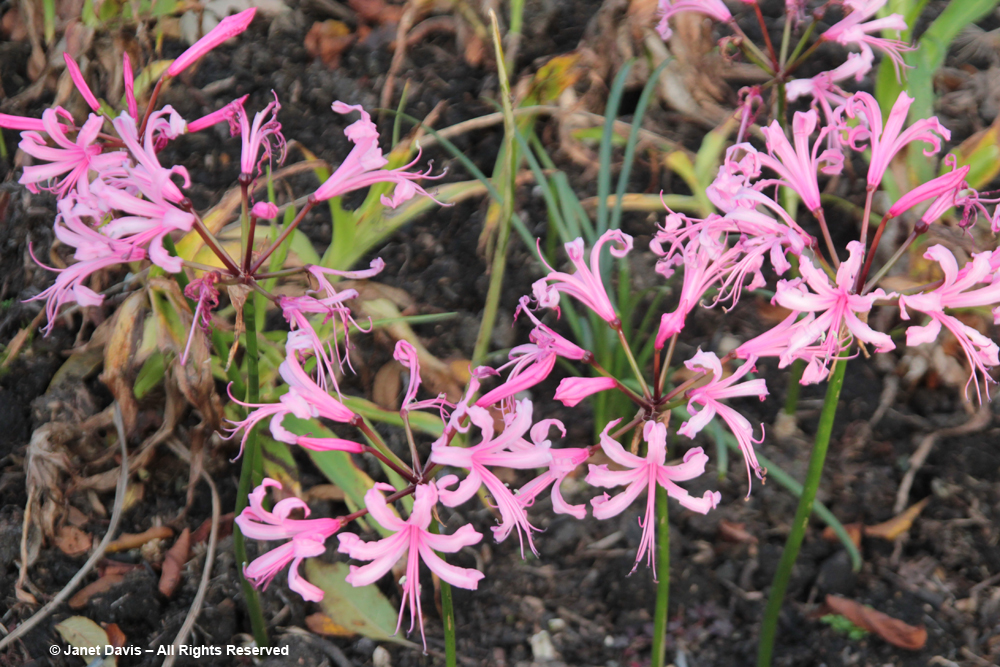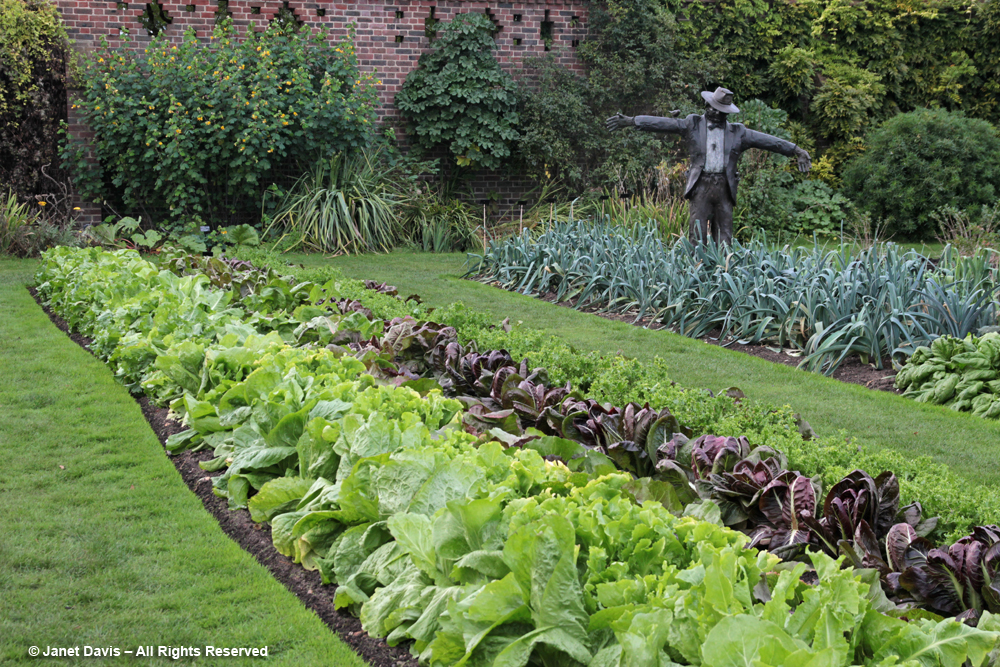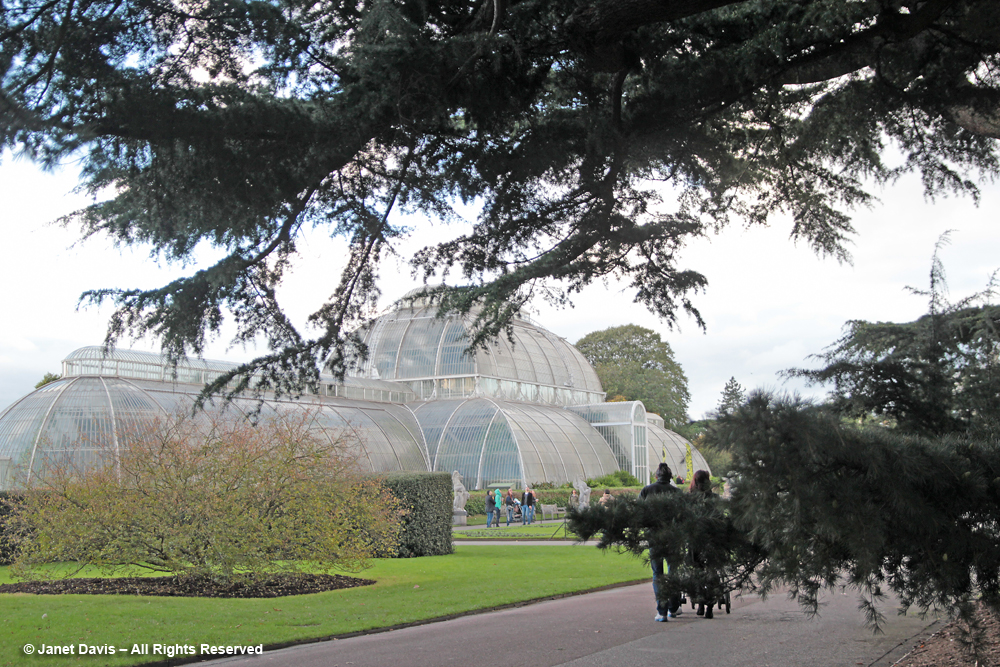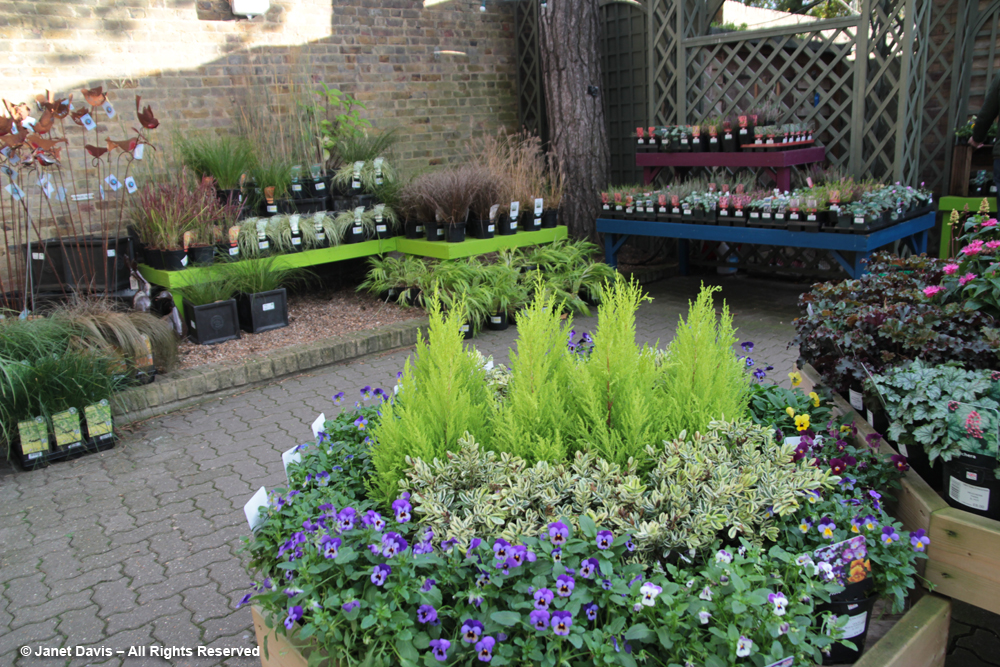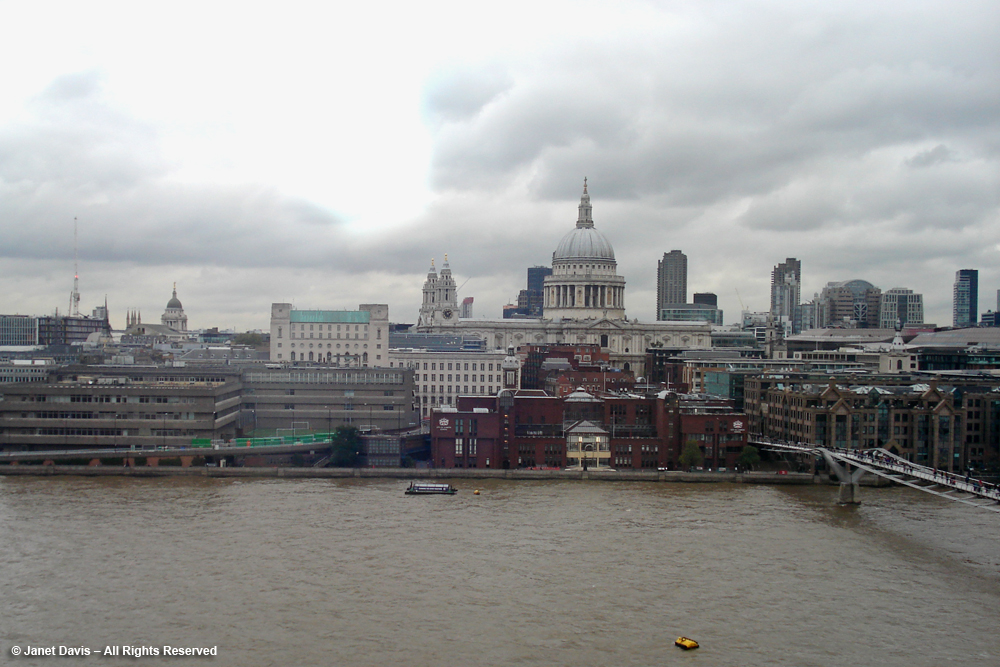Our last private Johannesburg garden visit is to the spectacular Beechwood Gardens, owned by Christopher & Susan Greig. It’s a lovely house in the Hyde Park neighbourhood, designed in Romantic-Flemish style by Steffen Ahrends and owned originally by one of Johannesburg’s 20th-century industrialists, cereal manufacturer Rudy Frankel.
Though the property’s name originally celebrated a massive copper beech tree that had to be removed after a storm, it is also graced by a huge specimen of North American water oak (Quercus nigra).
We are met by Beechwood’s full-time horticulturist Steven Gouveia and escorted via a shady side path toward the back garden. The property was originally landscaped in the 1940s by the renowned South African landscape architect Joane Pim, so the tree canopy is mature and the garden has good “bones”.
More than one gardener in Johannesburg has proudly drawn our attention to a beautiful shrub decked with mauve-striped white blossoms and flowering in dappled-heavy shade. It is the native South African forest bell bush (Mackaya bella) or “bosklokkiesbos” in Afrikaans, with azalea like blooms and glossy evergreen foliage.
Strolling through Beechwood’s woodland garden, our attention is drawn to a neat pile of cut tree limbs lining the path. It’s not firewood, says Steven, but simply a purposeful pile left to decompose and create sanctuary for nesting bees or other insects.
The path delivers us to the back garden, where empty clay pots await the season’s annuals (and remind us that this is, indeed, springtime in South Africa). And what’s this? Luscious yellow clivias (Clivia miniata var. citrina)…..
…. flowering like a little meandering river in the lawn under a shrub.
There was a time in the late 1980s when these newly-bred yellow clivias were so rare, they commanded a king’s ransom per single plant. There are numerous yellow colour forms now.
Christopher and Susan Greig are in the garden and greet us warmly. Christopher is the great-grandson of Charles Greig, who arrived in Gold Rush-gripped Johannesburg from Aberdeen in 1899. Soon he was producing clocks for the mines that were springing up around the young city, and over the next century, Charles Greig would become Johannesburg’s pre-eminent jeweler, with five stores in the city.
Susan brings out freshly-baked cupcakes (she runs a cooking school from the property) serving them beside the beautifully-furnished outdoor sitting area adjoining the house.
Then Christopher takes us on a garden tour, explaining what he’s done with the 3.5 acre garden in the 14 years that they have owned Beechwood, which is open to the public on the last consecutive Friday and Saturday of each month except December.
We begin with the series of six interconnected naturalistic ponds and a bog.
Though it’s too early in the season for the lotuses, the waterlilies are in full bloom.
And the ponds attract Egyptian geese, here preparing to swim away beside a planting of red Louisiana iris (Iris Hexagonae Group).

I am not familiar with these stunningly beautiful and colourful Hexagonae irises, a complex hybrid mix of five southern iris species: I. brevicaulis, I. fulva, I. hexagona, I. giganticaerulea and I. nelsonii.
And here’s a closer look at the Egyptian goose (Alopochen aegyptiaca). It is native to Africa and was considered sacred in Egypt, where much of the breeding occurred.
The family swimming pool is simple and overlooked by a Luytens bench.
We step down onto the terrace adjoining the rose garden, where a pretty flower border greets us. Ranunculus (R. asiaticus) really seem to thrive in this climate, as they do in California in spring. The mixed colours are united with silvery lambs’ ears (Stachys byzantina).
Such attractive flowers – and excellent in spring bouquets.
Though mostly out of bloom this early in the season, the formal rose garden is spectacular with its boxwood-edged beds. It sits 2 metres (6 feet) below the lawns. Christopher designed the long colonnade on the left, bringing the handsome support pillars from elsewhere in the garden.
The rose garden is arranged around a formal fountain. Water for the fountains and water features is not a problem at Beechwood Gardens, which sits over a natural underground aquifer.
The sunken vegetable garden, designed by Christopher (who also grows the vegetables from seed), provides many of the ingredients for Susan’s cooking school, which is housed in the building in the background.
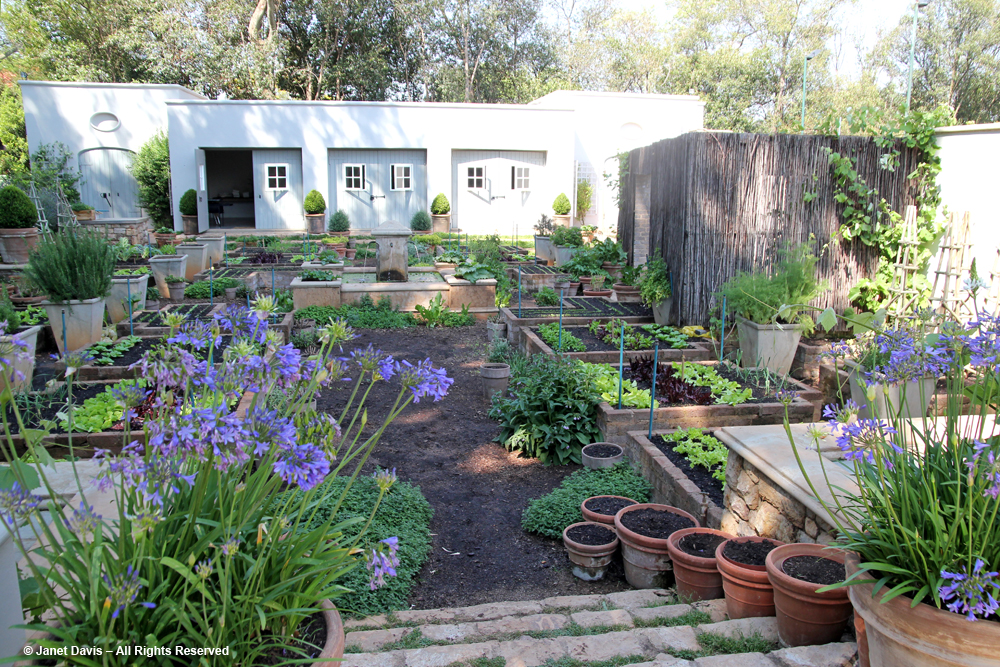 Like a French potager, it also features a classical central fountain and slightly raised brick-edged beds filled with all kinds of leafy plants. Here, the rhubarb is just about ready to harvest.
Like a French potager, it also features a classical central fountain and slightly raised brick-edged beds filled with all kinds of leafy plants. Here, the rhubarb is just about ready to harvest.
Later in the season (October corresponds roughly to May for temperate plants in South Africa), when the root vegetables and tomatoes have matured and the nasturtiums and cornflowers are in bloom, it must be gorgeous. Here’s the view looking back to a faux ruin.
Christopher is proud of being fully organic and encouraging all kinds of beneficial insects. To that end, he promotes the use of Mycoroot, a product that fosters healthy root growth.
Alongside the vegetable garden is a walkway flanked by fragrant French lavender and citrus trees.
Honey bees adore lavender, an excellent source of nectar — and, of course, lavender honey.
This afternoon we will leave Johannesburg and head north toward Kruger Park. But we couldn’t have finished our garden tour in the city with a lovelier, more diverse garden than Beechwood, thanks to the gracious welcome of Susan and Christopher Greig.

